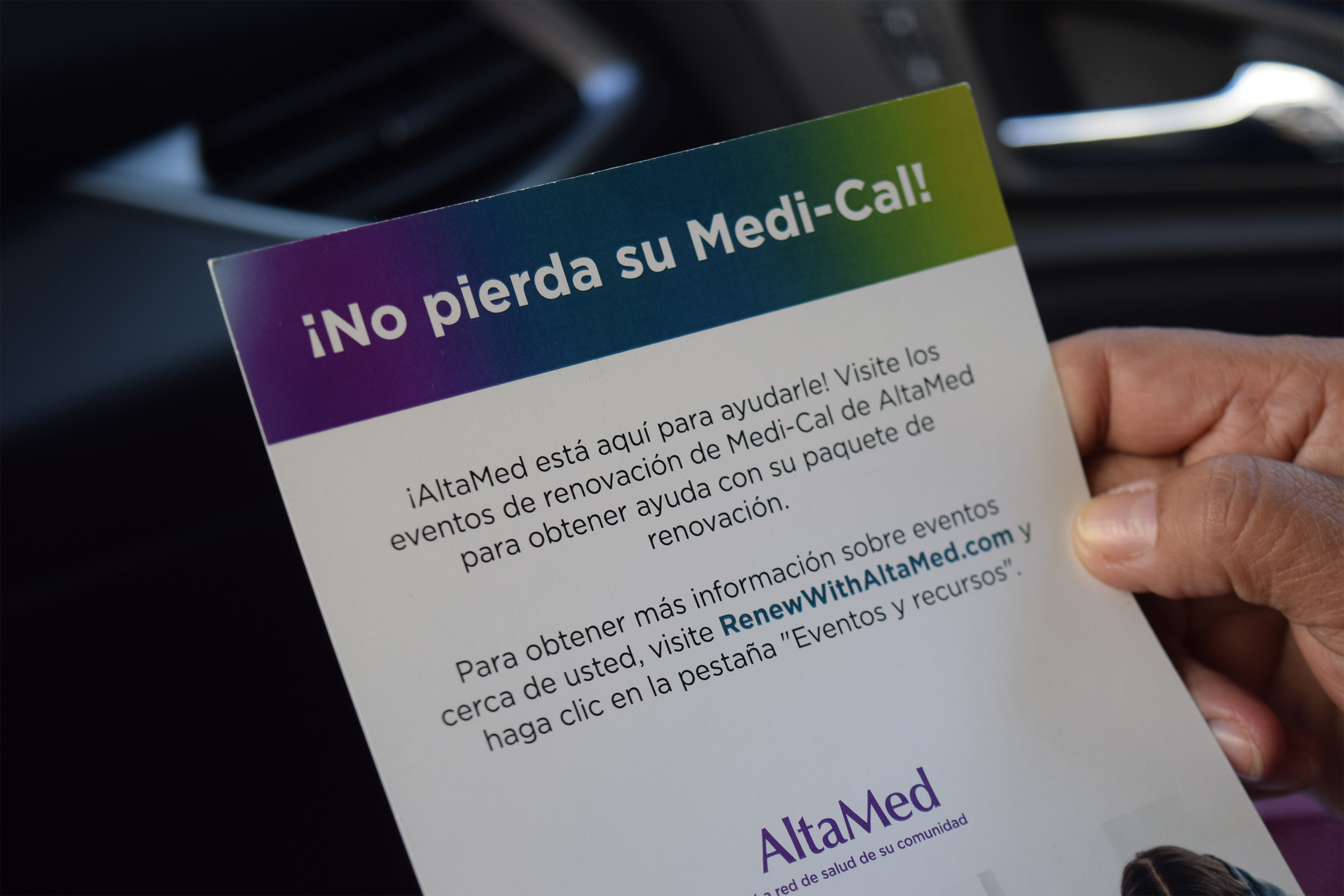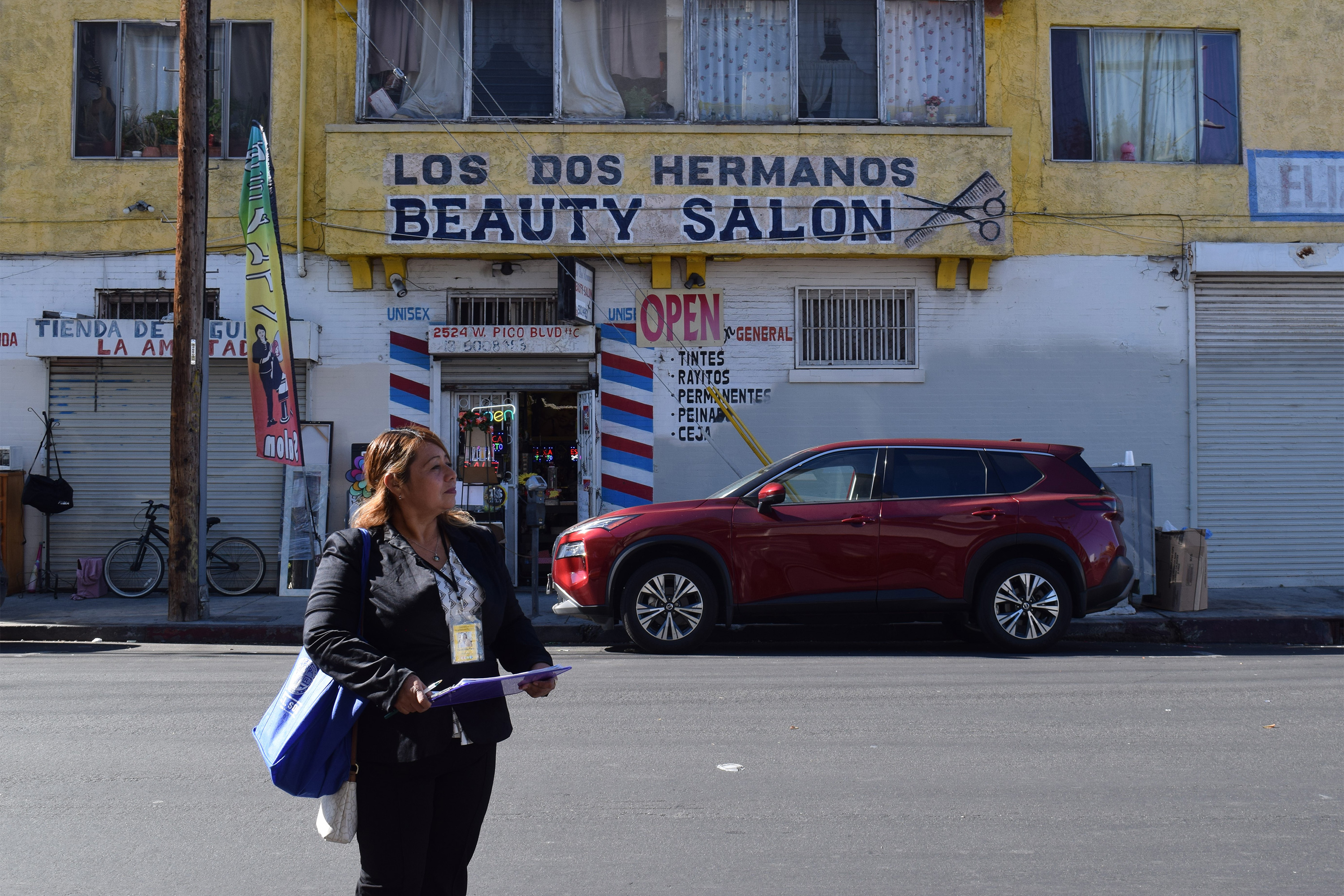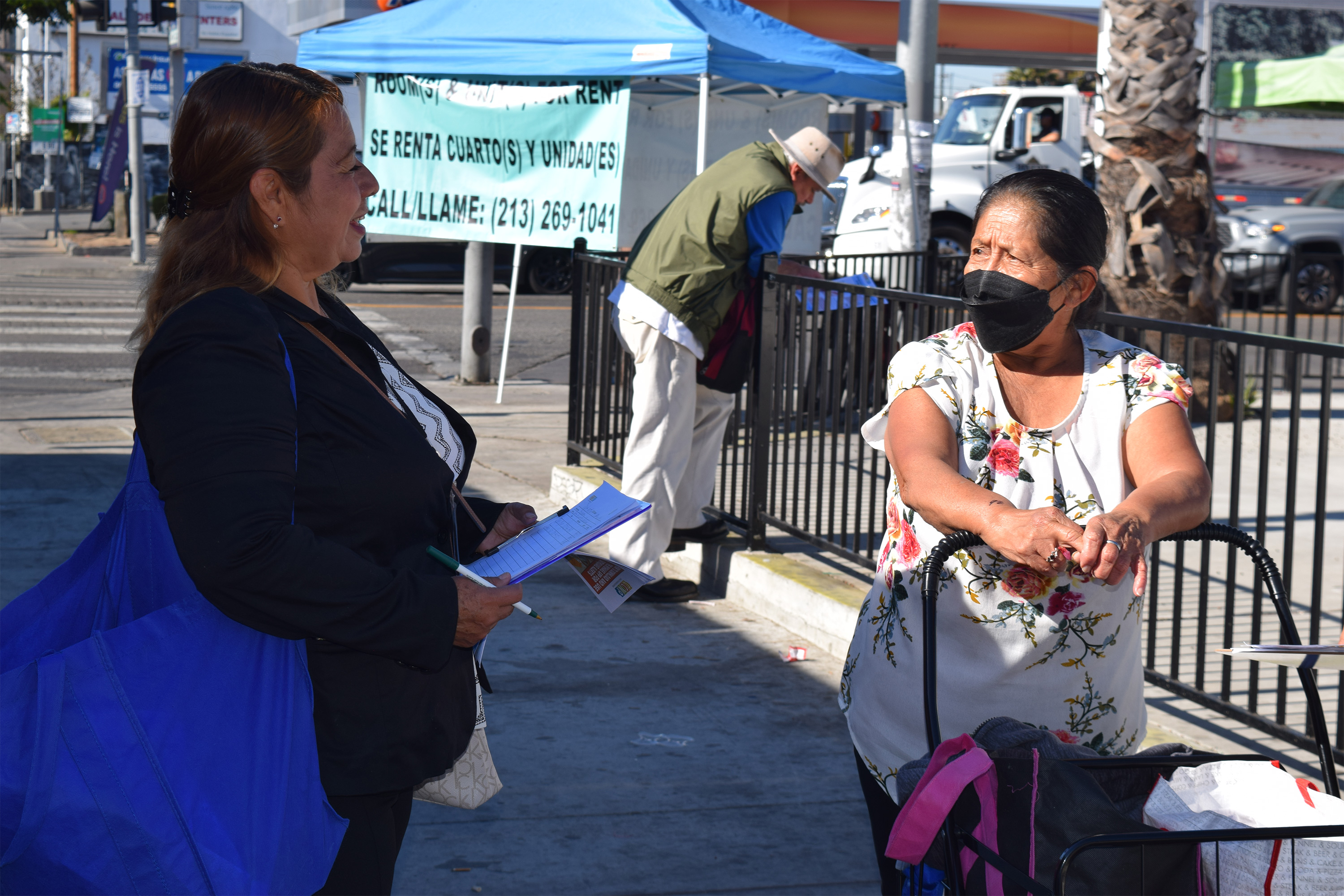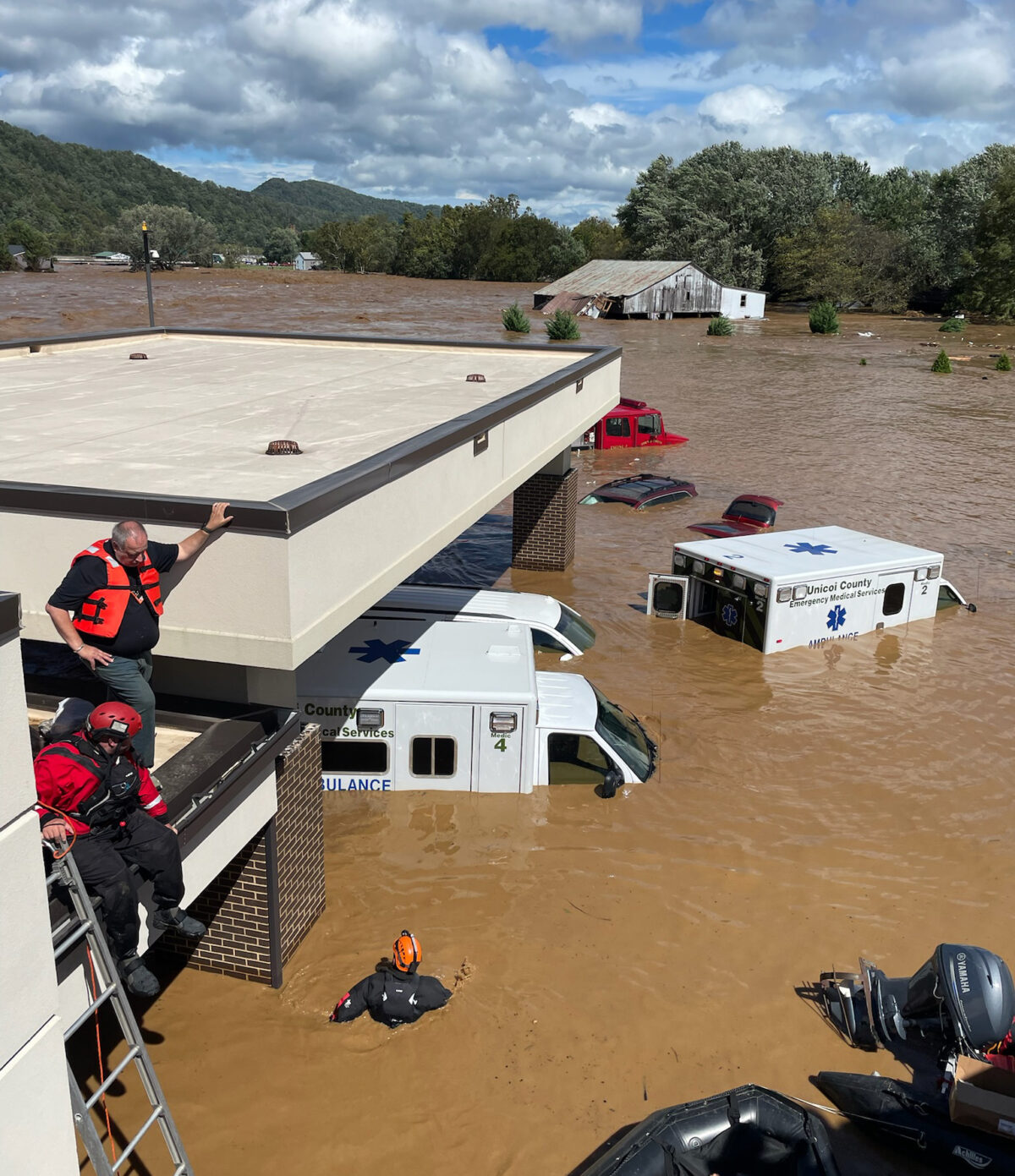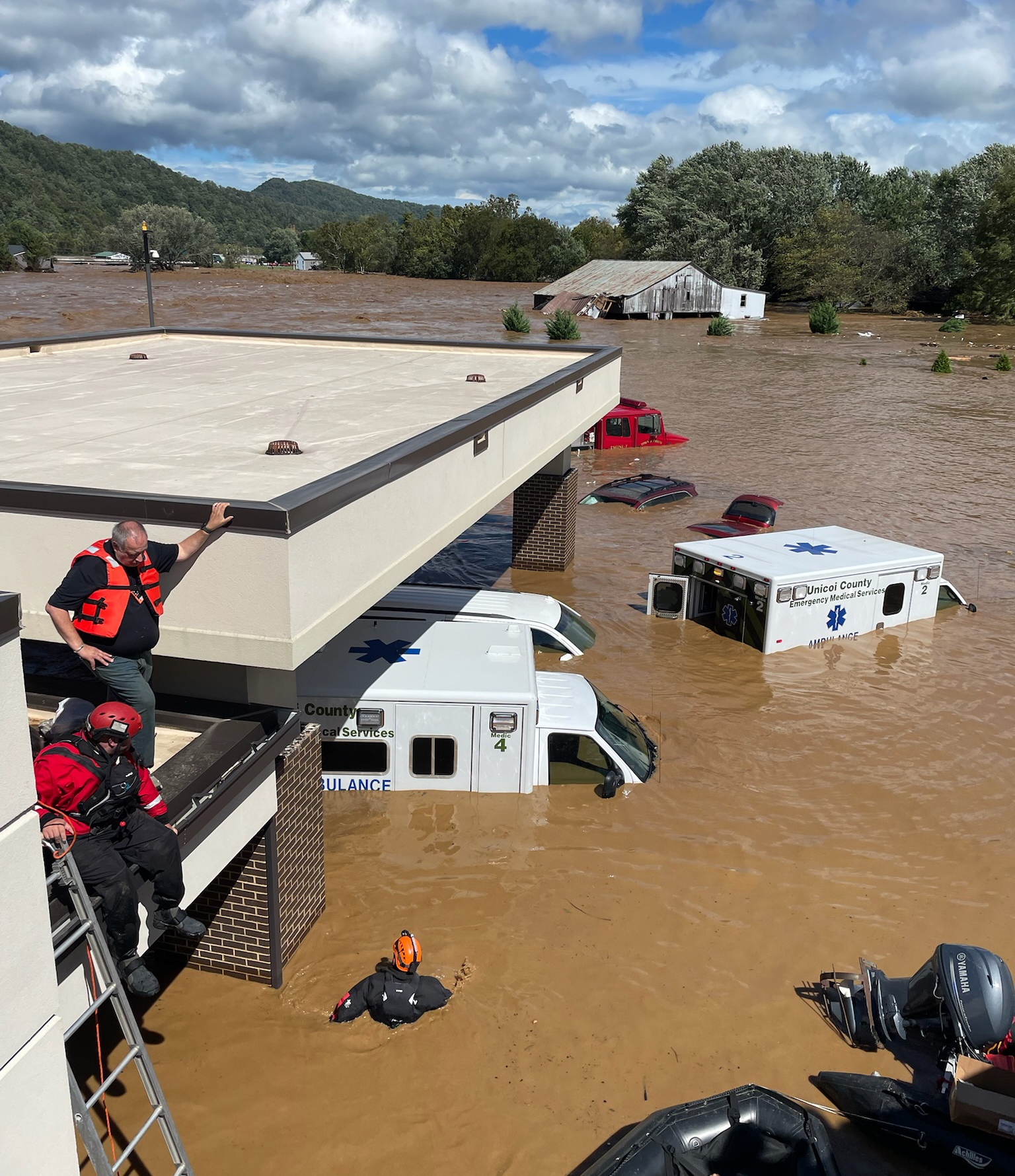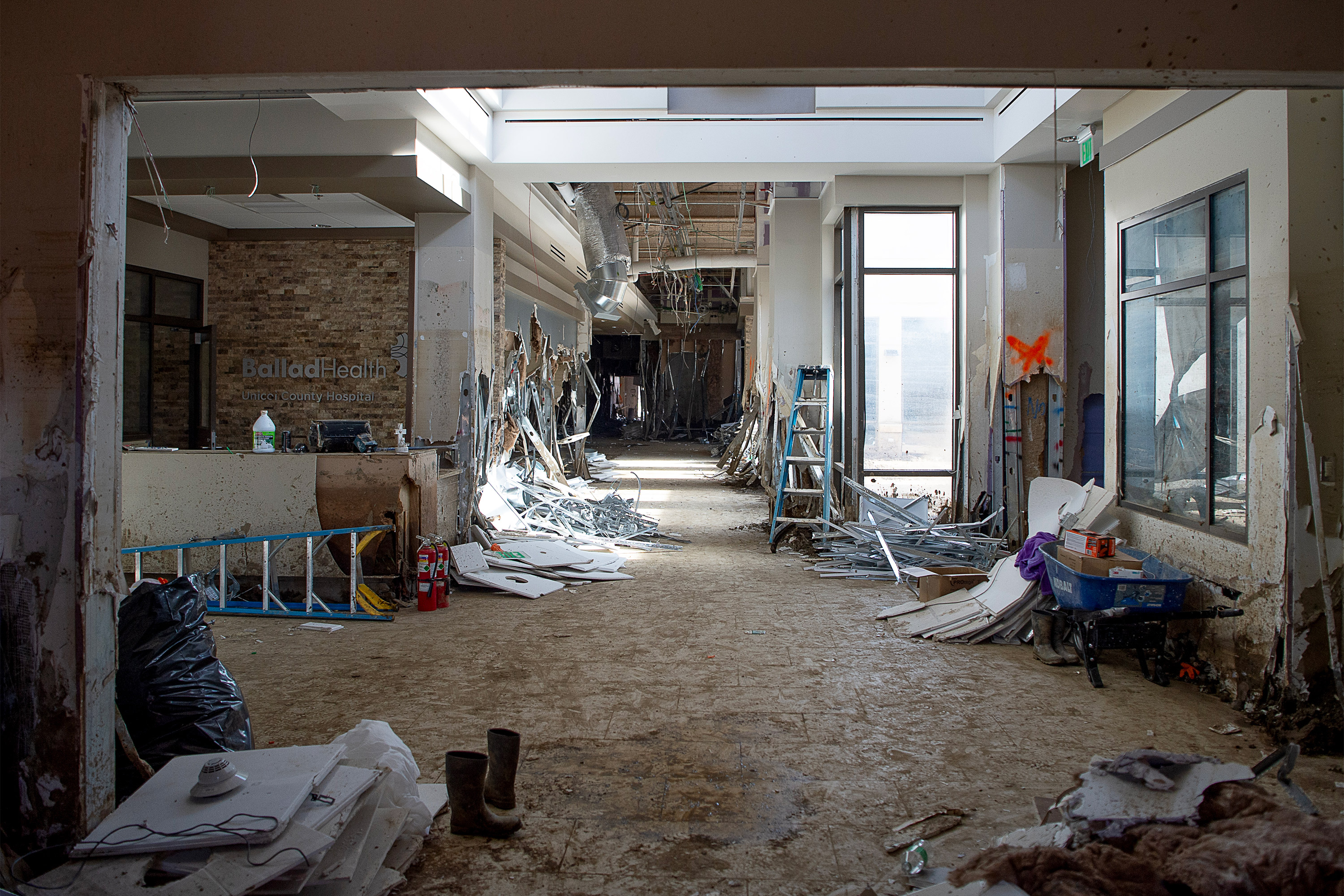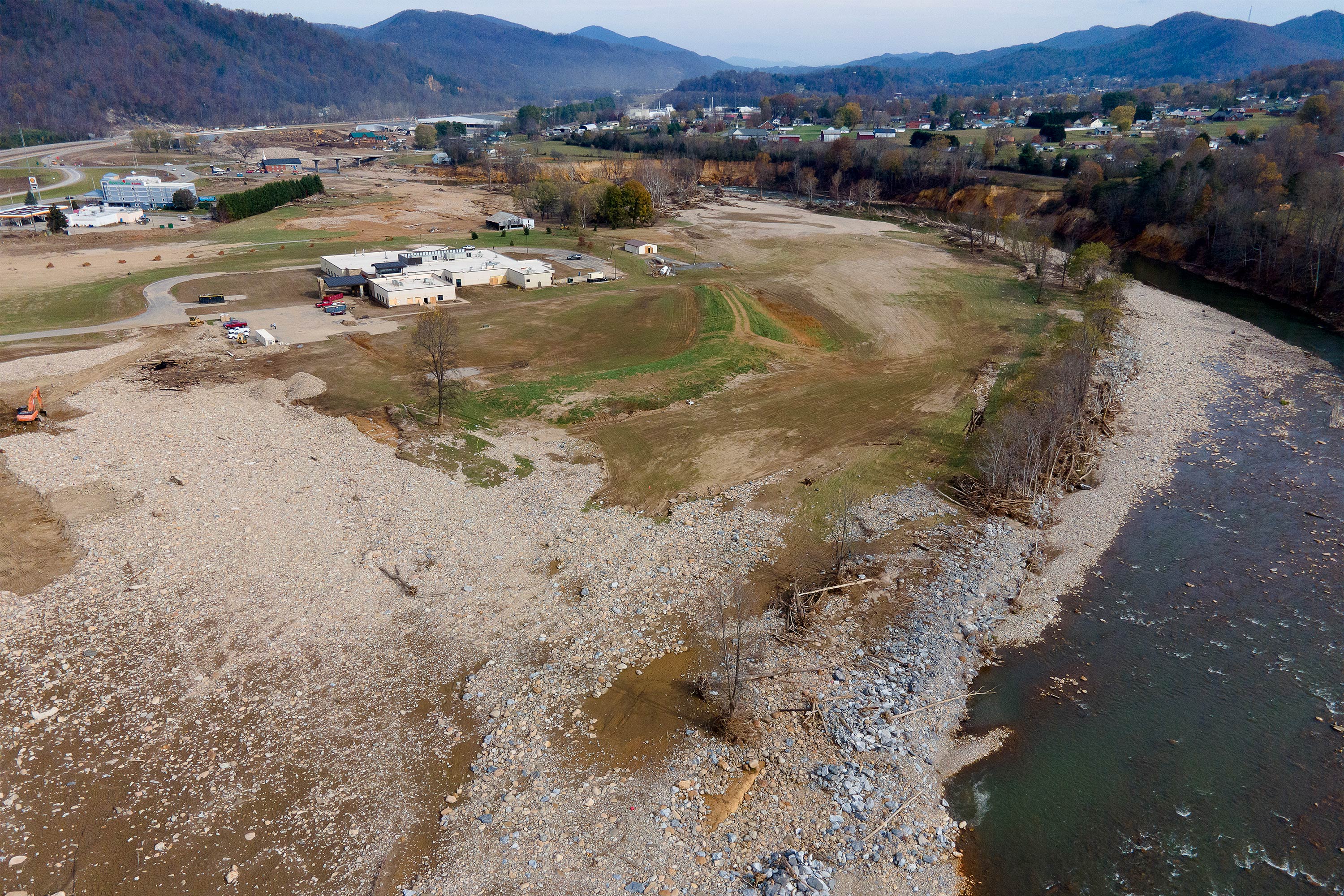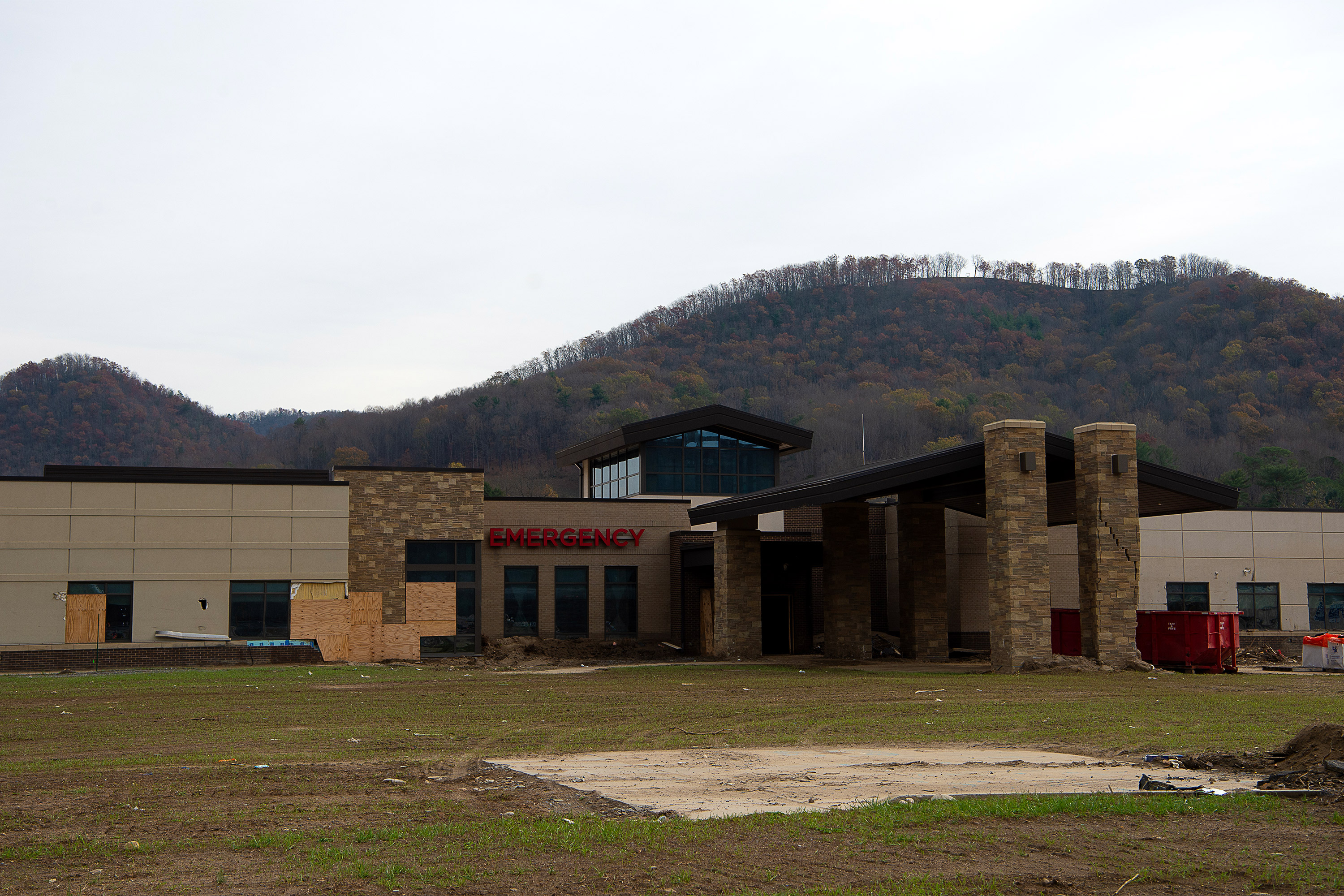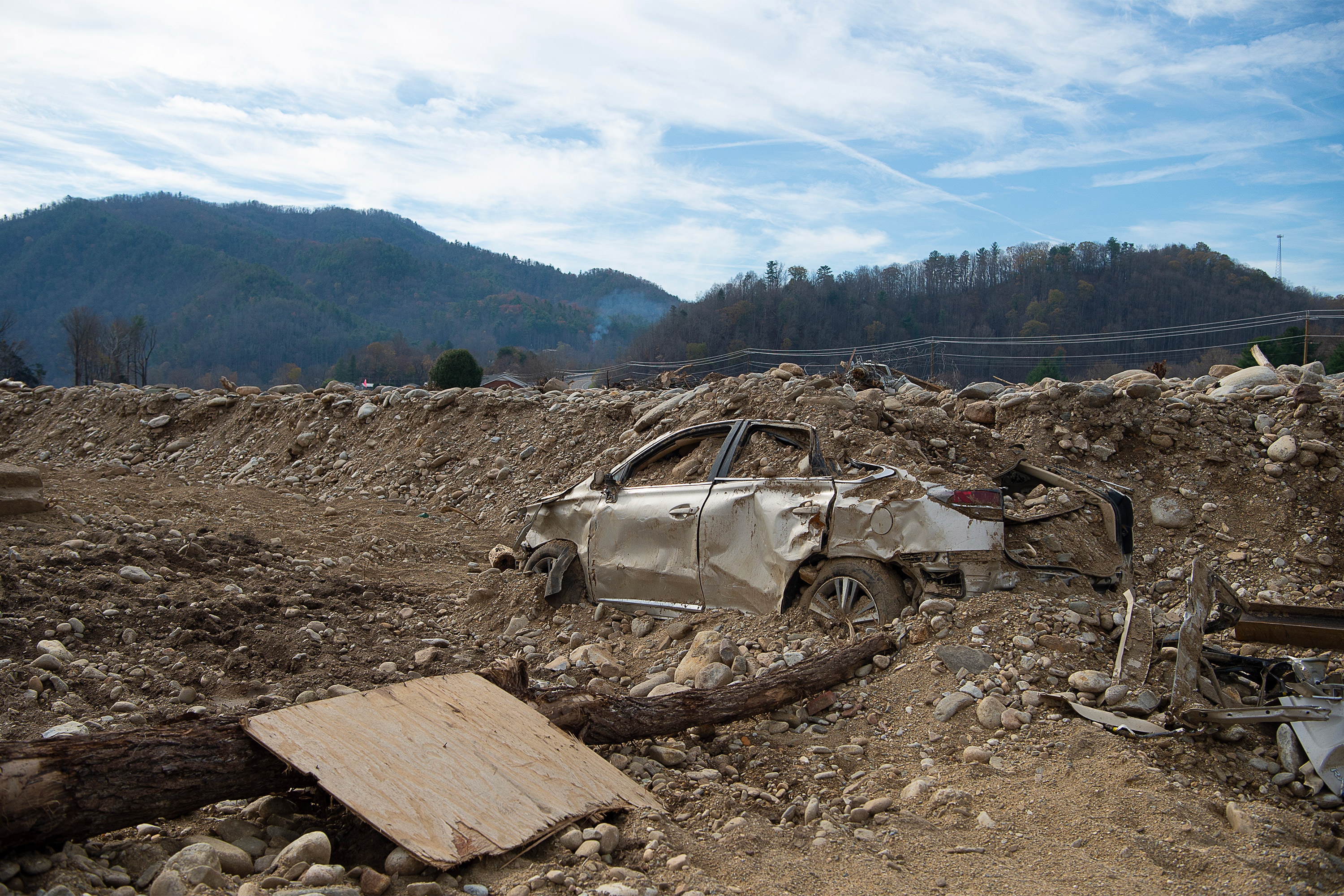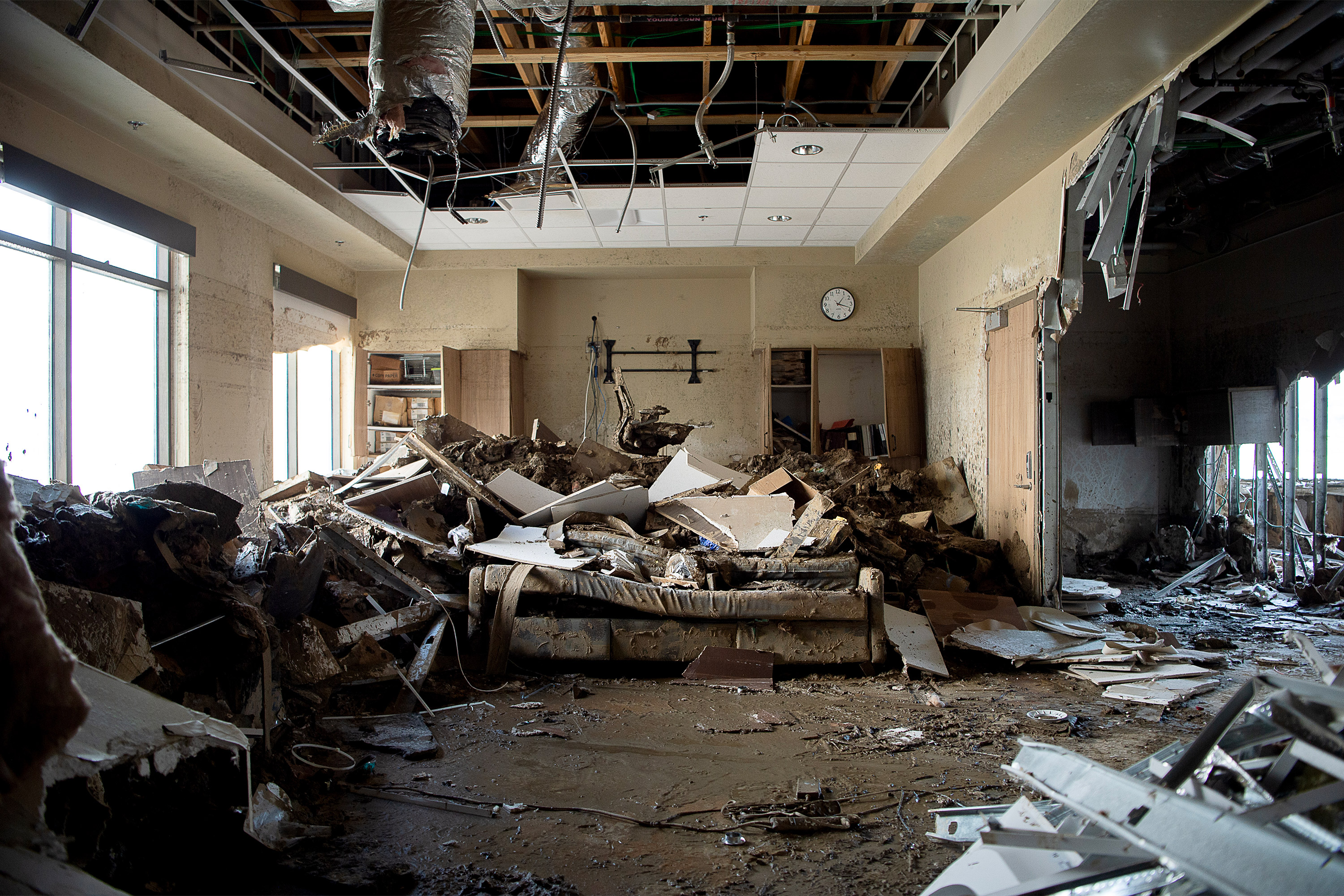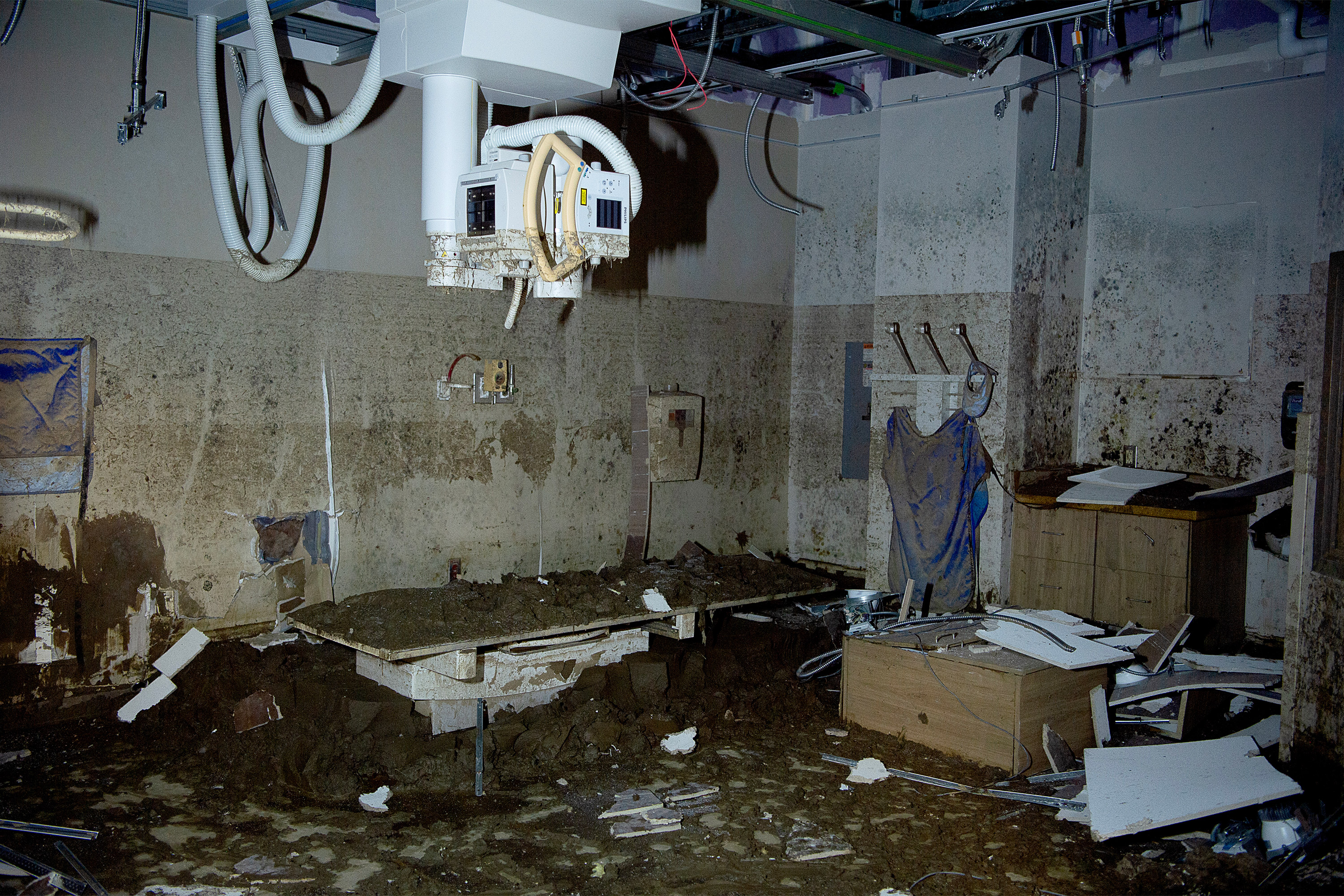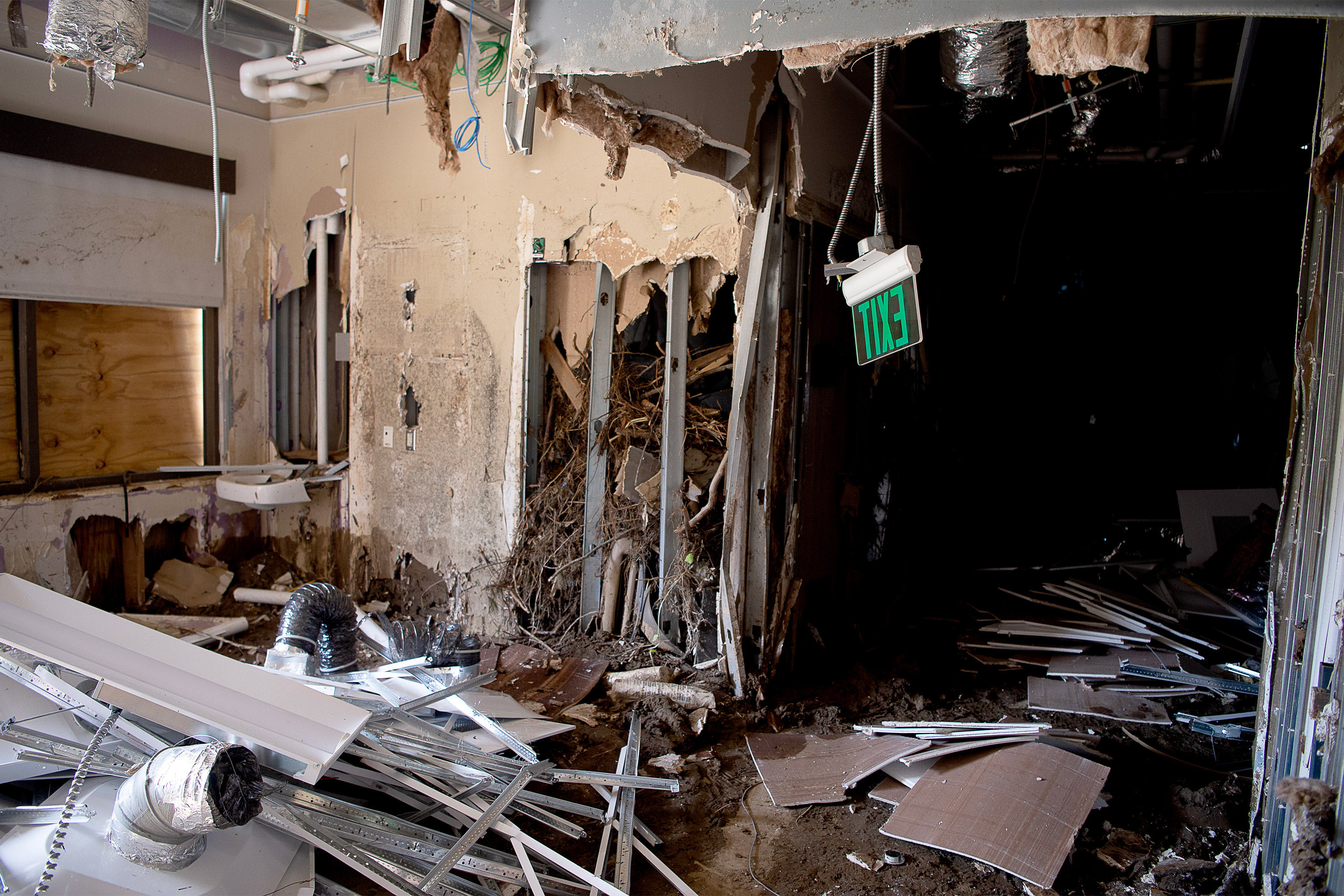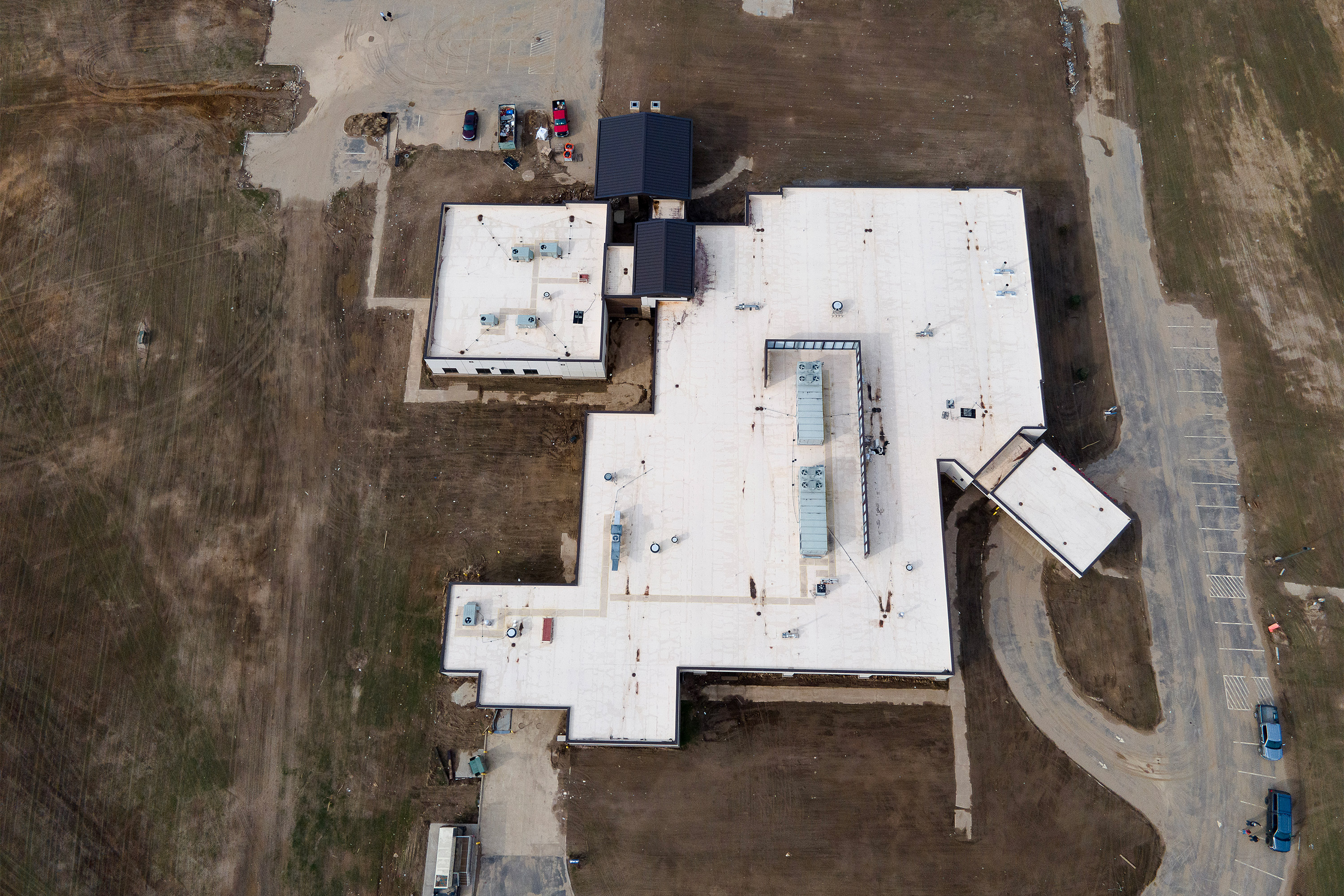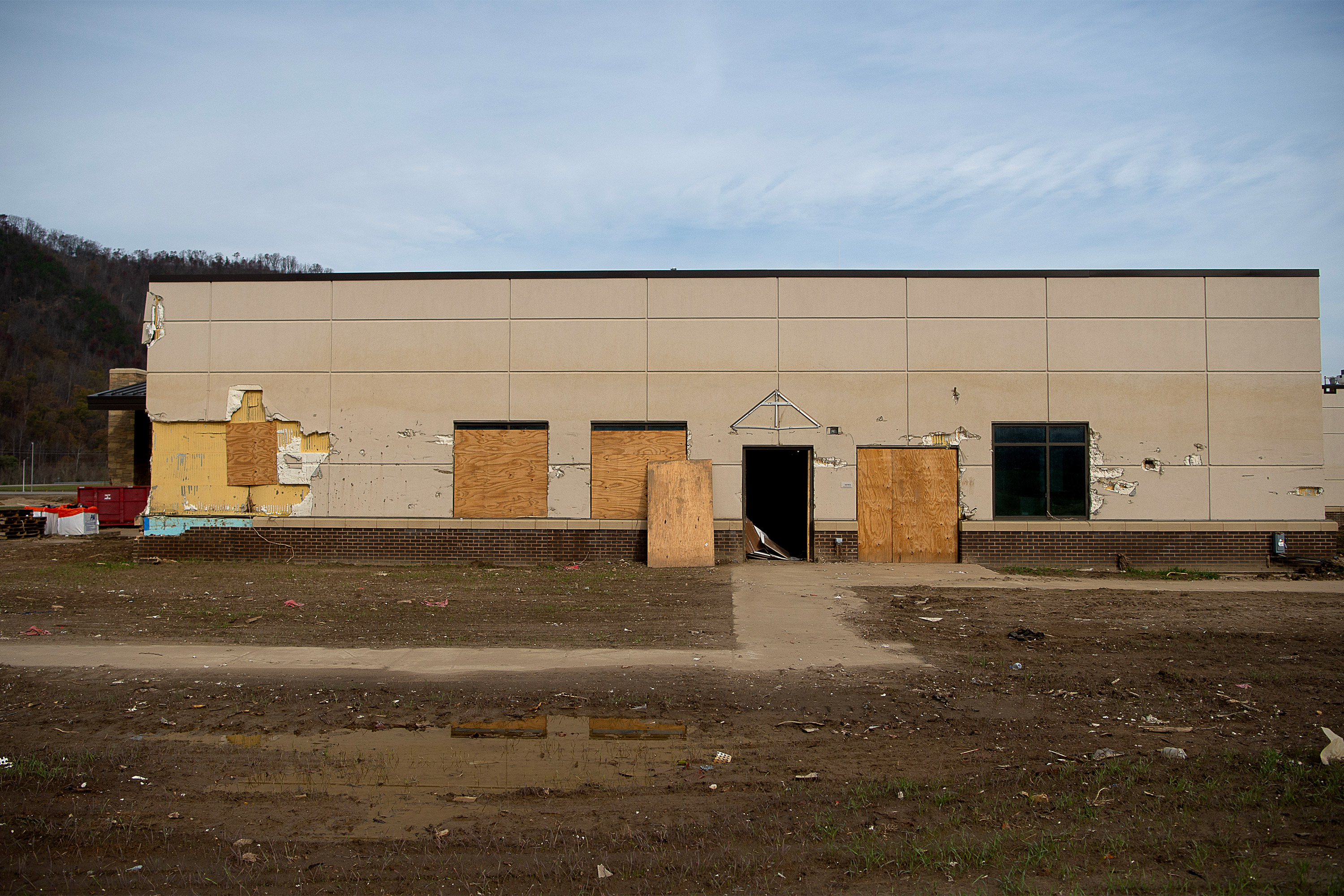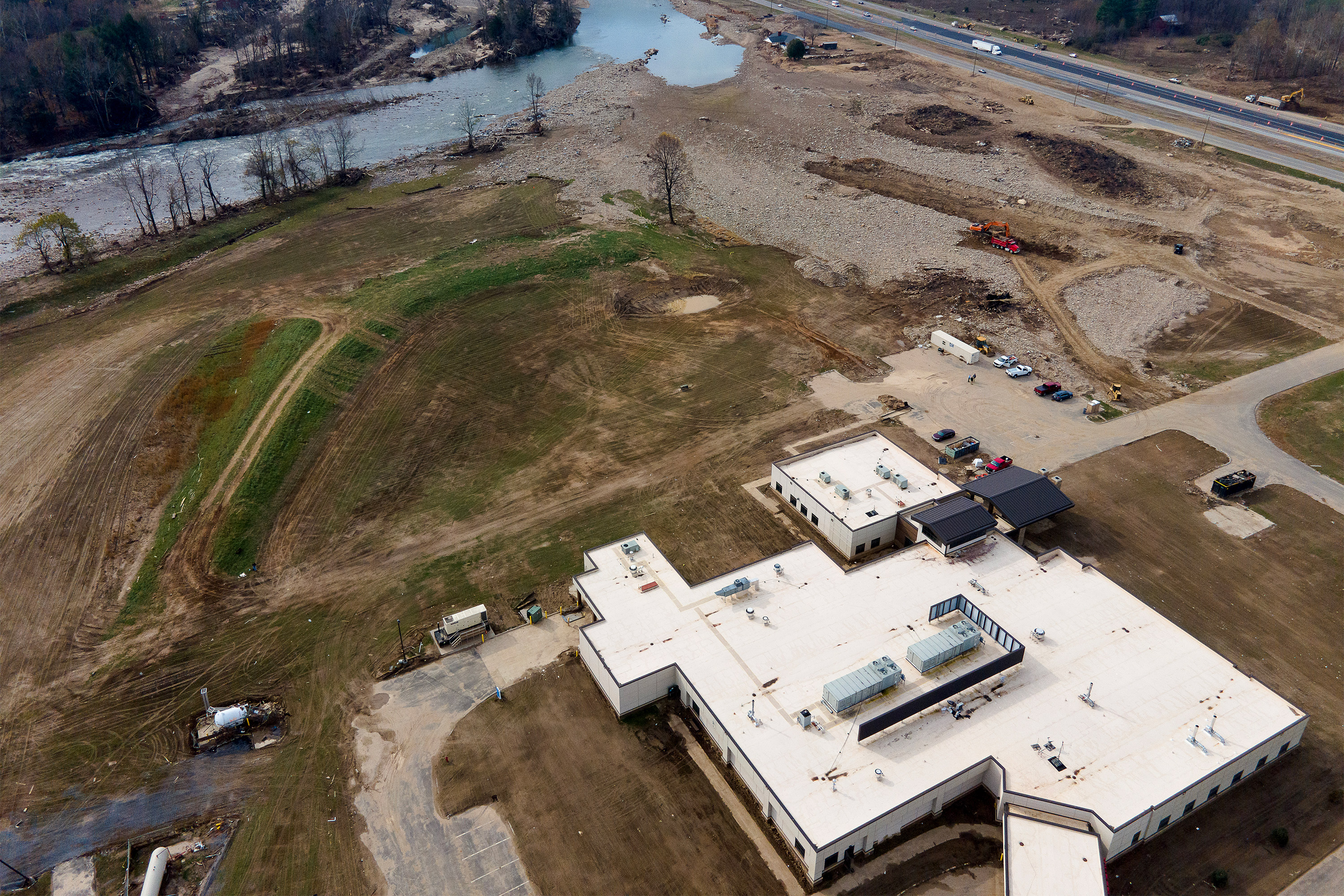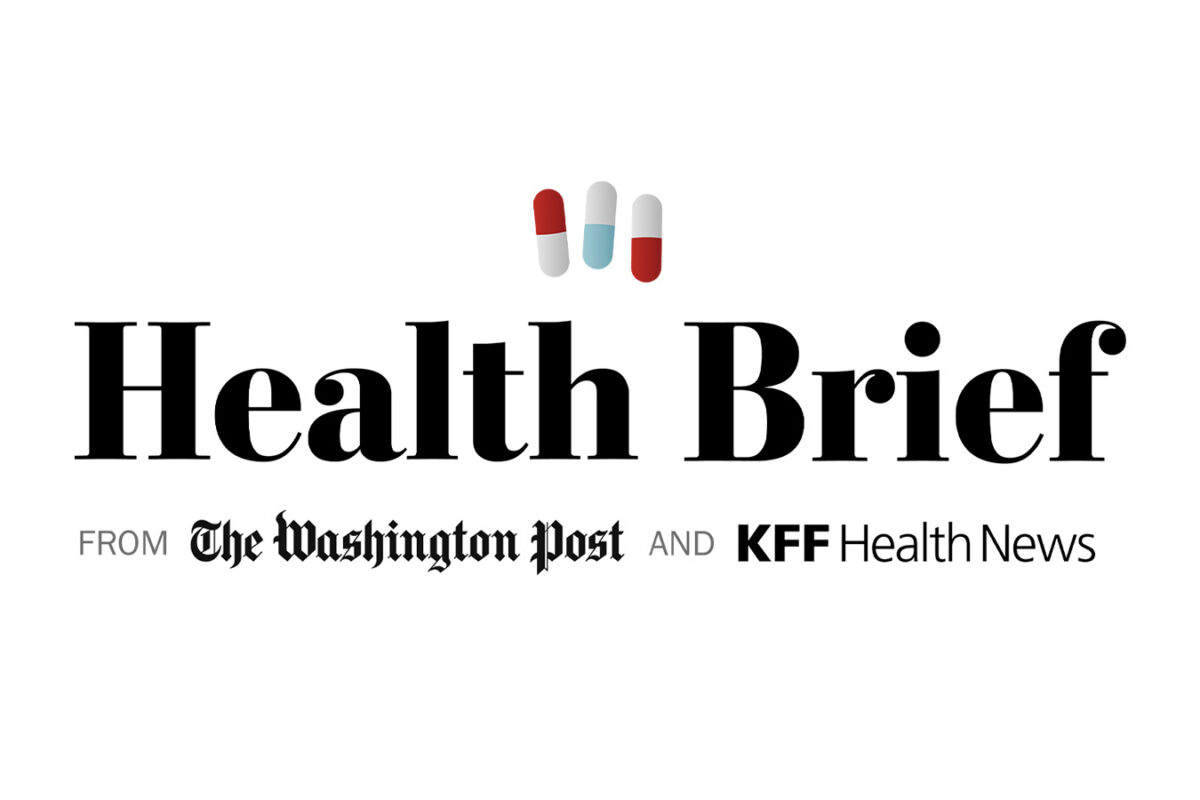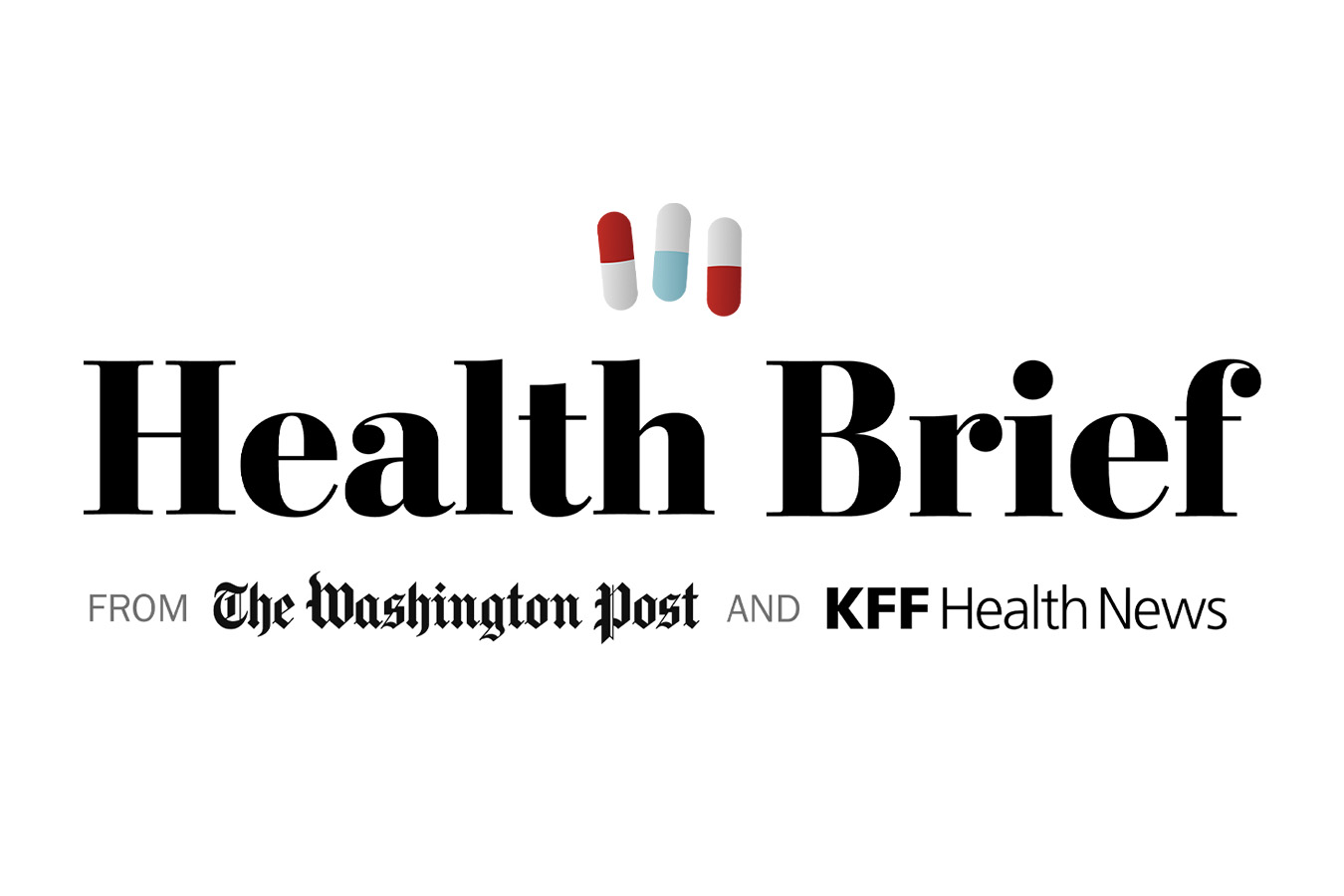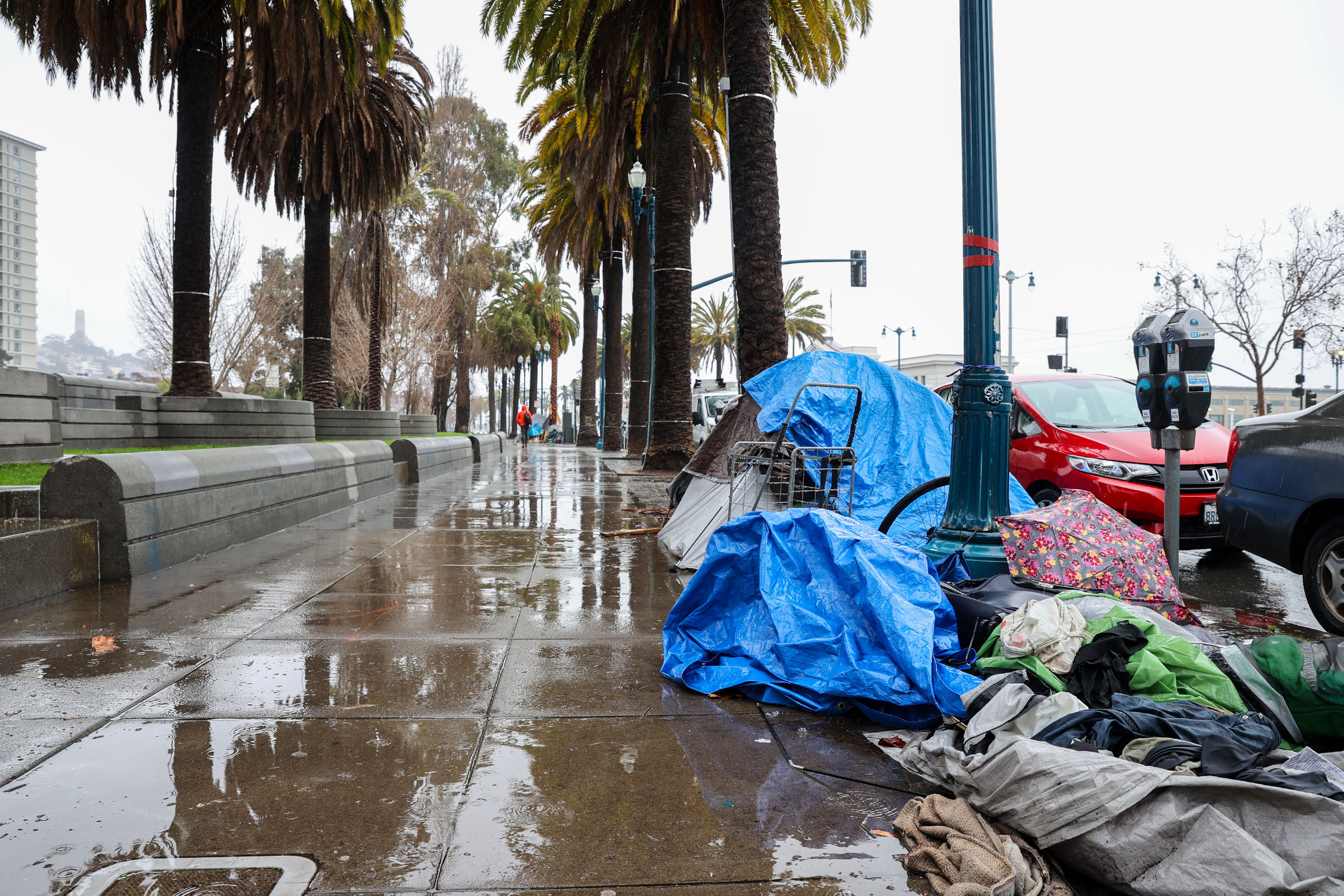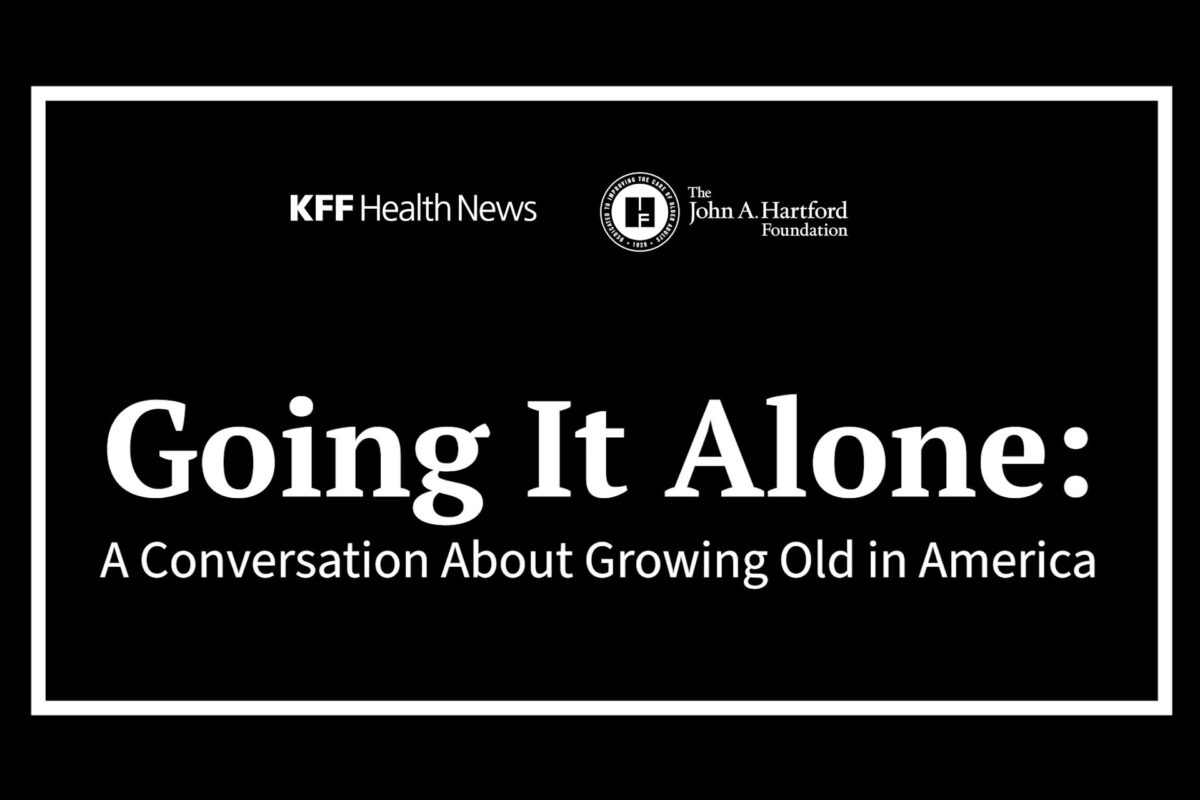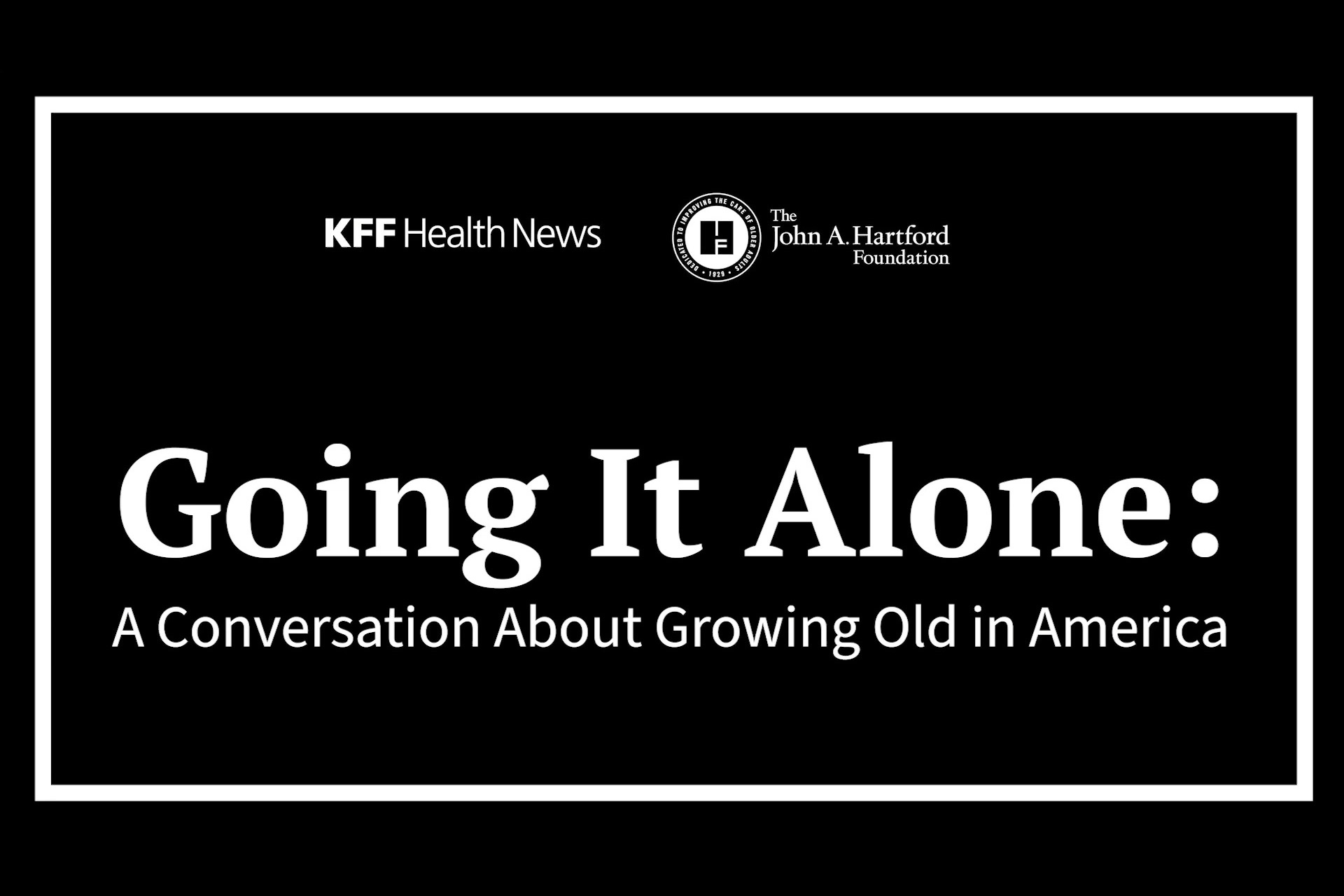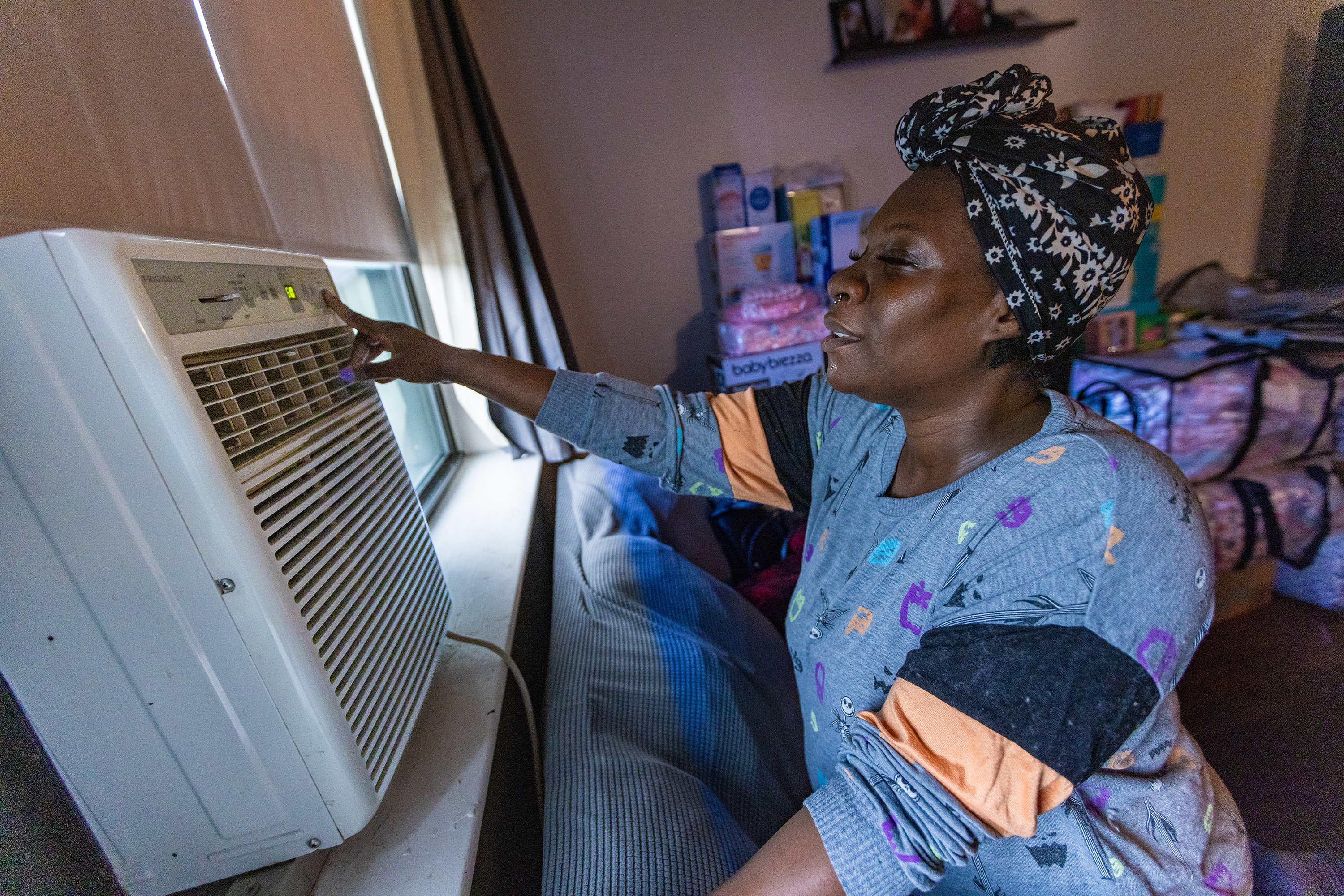[Editor’s note: This transcript was generated using both transcription software and a human’s light touch. It has been edited for style and clarity.]
Judith Graham: Good morning, everyone. Thank you for joining us today. I’m Judy Graham, and I write the “Navigating Aging” column for Kaiser Health News, actually known as KFF Health News. I’m also the moderator for today’s event. We’re all in for treat: a conversation with five remarkable older adults about their lives and their experiences.
First, a few words of introduction. As many of you know, KFF is an independent organization that focuses on health policy research, polling, and news. It sponsors KFF Health News and partners with media organizations across the country. The Washington Post has been our partner for the series that is the subject of this webinar, “Going It Alone.” KFF Health News is committed to covering the greatest demographic trend of our time: the astonishing growth of the older population, now 60 million strong. And I’ve been privileged to be a part of that. For many years, The John A. Hartford Foundation, the co-sponsor of this event, has supported our aging coverage. I’ll let Rani Snyder, who oversees the Hartford Foundation’s grant-making to improve the care of older adults, tell you more. Rani, onto you.
Rani Snyder: Thank you so much, Judy. It’s great to be here. And thank you, especially Judy, for all of the work that you do for the “Navigating Aging” column, which is just terrific. Our foundation, The John A. Hartford Foundation, is really proud to support today’s event and KFF Health News and all that you do. I am Rani Snyder. I’m the vice president of program at The John A. Hartford Foundation. Our foundation is a nonpartisan national philanthropy with the mission to improve the care of older adults. We happen to reside in New York City, but we operate all across the country. And we work in three different areas: creating age-friendly health systems, supporting family caregivers, and improving serious illness and end-of-life care. And I really want to welcome our entire audience to today’s discussion about living alone while growing old. Our foundation invests pretty heavily in supporting family caregivers or older adults who are the backbone of care in this country.
And we also recognize, and even more so now, thanks to Judy’s excellent reporting, that millions of people don’t have a family member or a friend who are assisting them as they age and could potentially need care. So our foundation is working to make sure that all older adults, no matter where they live, no matter their background, no matter their family circumstances, have access to high-quality, age-friendly care that’s focused on what matters to all of us as we get older. So by funding programs that connect health systems, public health, and community-based services, and also by engaging when we can with policymakers and the public, our plan is to create systems of support and communities of connection that help people to age well as they’re aging alone. Speaking of aging well, right now we’re developing a new initiative to support social connection among older people, and we invite you to follow and engage with us at our website, which is johnahartford.org.
We’re really looking forward to this conversation today, actually. Our goal is not only to highlight challenges, but, honestly, to explore the resilience and the ingenuity of people who are aging solo. And that’s why I’m especially thankful to our panelists, five people who are featured in Judy’s series. We so appreciate your sharing your stories, and I would encourage everyone who is online on this webinar to engage with them and engage with Judy by asking questions and contributing to this discussion. So please carry this conversation forward to your networks and your communities. You also have the opportunity to shine a light on this topic that’s too often overlooked. So now let’s get started, and I want to hand it back to you, Judy, to introduce this fabulous panel.
Graham: Thanks so much. A little context before we get straight to it. The number of older adults living alone in the United States is truly unprecedented. In the past, there were fewer older people and they tended to live with family as they grew older. But with longer life spans, older people are outliving spouses; with increasing divorce rates, more people find themselves without partners as they age and with greater mobility. Even those with adult children find them far away and not part of their daily lives. How big is this group? We’re talking about more than 10 million older women and 6 million older men who live alone, according to the U.S. Census Bureau. Health issues are common in this group. Nearly 4 in 10 older adults who live on their own have vision or hearing problems, difficulty living independently, problems with cognition or other disabilities. Who’s around to help them or even notice when these older adults need assistance?
As Rani said, our health care system relies on spouses, partners, and adult children to be the backbone of our system of nonmedical care for seniors. What happens when there are no family members of this kind or they live at a distance? These are among the questions I’ve explored in my series “Going It Alone,” and I focused in this series on the real experts in this topic, older adults, who know better than anybody else what they live with. Today, you’ll hear from five of the older adults who appear in my series. As you can see, they live in different parts of the country, and they face different issues. We will talk for about an hour and then spend half an hour answering your questions. Please submit those via the chat function on your screen or the Q&A function. I’ll try to get to as many as I can.
This event is being recorded and will be accessible permanently afterward on YouTube, and we’ll of course link to it on the KFF Health News website. Now on to our panelists. I’ve asked them to introduce themselves before we dive into our discussion. Let’s start with Bill Hall in Seattle.
Bill, your sound is not working. Why don’t you try again and … OK, we’re going to go on to somebody else while you work with your sound. Let’s try Don Bell in Chicago.
Donald Bell: Good morning, everybody, and welcome to Chicago. My name is Donald Bell, and I am a resident of a unique senior residence, the Town Hall Apartments, which is Chicago’s first and the nation’s fourth LGBTQ+-friendly senior residence. Now, LGBTQ+-friendly does not mean LGBTQ+-exclusive. Our demographic breaks down by the following percentages: We have 30% of our neighbors are hetero-identified and 70% are LGBT-identified, but together we form one great community.
Graham: How old are you, Don? And do you live alone?
Bell: I’m 75.
Graham: OK, thank you.
Bell: Yes.
Graham: Hilda Jaffe of New York City. Why don’t you introduce yourself?
Hilda Jaffe: OK. Good morning — well, it is still morning everywhere, I guess — everyone. My name is Hilda Jaffe. I live in New York City, the crossroads of the world, and I live about one block away from Times Square, which is the crossroads of New York City. I am 102 years old, which astonishes me every day, I can tell you that. I have lived in New York City for the past 14 years. Before that, I had 60-some years in a house in New Jersey. After my husband died, I lived there for a short while and then moved into New York from an ordinary three-, four-bedroom house into a one-bedroom rental apartment in a high-rise building. I’m a widow, as I’ve mentioned. I have two children, my son in California, my daughter Tel Aviv, Israel.
I have five grandchildren and eight great-grandchildren who live in California, Philadelphia, Switzerland, and Israel. I’m in a centenarian study, and that is really an important part of what goes on in my life — to be a part of about 2,500 other people who are involved in this largest centenarian study in the world run out of New England. It’s called the New England Centenarian Study. And I do puzzles. Every day I do The New York Times crossword puzzle.
Graham: In ink, if I am correct.
Jaffe: Correct.
Graham: Ken Elliott, why don’t you go next?
Ken Elliott: OK, thank you, Judy. My name’s Ken Elliott. I live in Mount Vernon, Maine. I’m 78 years old. I’ve not ever been married nor had children, and I live alone. I think I’m the voice of a rural community here. My town is Mount Vernon. It’s 1,300 people. We do have an aging-in-place group, and I’m keenly interested and have been interested in the solution side of solo aging, and perhaps we’ll circle back to that later on in our discussion.
Graham: Great, thank you. Denise, tell us about yourself.
Denise Baker: Morning, everyone. I’m Denise Baker. I want to give you a few snippets about myself. I’m 81 years old. I live in a lovely house in Asheville, North Carolina, with my roommate, Yellow, the dog. I moved here 15 years ago after retiring from my job with the government in Washington, D.C. I have vascular and Alzheimer’s dementias and I have limited vision. I spend a lot of my time making pottery, which is my entry into the world. I have raised three daughters and a husband and am happily divorced for 35 years. My daughters live in Boston and Denver. I feel that I’m pretty self-sufficient. If I need help, I have neighbors and friends who are more than happy to pitch in. Sometimes too happy to pitch in. I like making my own decisions when I can. I’m a team member for Dementia Friendly Western North Carolina, and we do educational sessions for community groups who want to learn more about dementia. And that’s me in a nutshell.
Graham: Thank you, Denise. Now Bill, hopefully we’ve solved these sound problems.
Bill Hall: I hope so. Can you hear me?
Graham: Yes.
Hall: OK.
Graham: How about introducing yourself?
Hall: My name is Bill Hall. I am a Tlingit Indian from a small fishing village in Alaska called Hoonah. I am from the Raven Clan and I live in Seattle, Washington. I’ve been living with HIV and AIDS for 38 years now, and I live in a building that was built specifically for people living with HIV. It’s called Cal Anderson House. I am the community advocate for the Native American community here in Seattle on HIV, and I’m really happy to be part of this panel.
Graham: And how old are you, Bill?
Hall: I am 71.
Graham: Thank you. All right. Now that we’ve met all of you, it’s time to dive in. And Don, I think you’re going to go first. They say about raising children, it takes a village. I think that’s true for older adults too. Do you have a community of people you can rely on? Who’s part of that community?
Bell: Well, I do have a community of people on whom I can rely, starting with my church community, a very welcoming church, and that’s what we pride ourselves on. And, of course, I do have bio relationships too. I have two adult children and seven grandchildren. But it’s the friends and friends of long term who are really important because they’re people who go through the stages of life with you. And my long-term friends and I agree that rather than buying into the values of ageism that tell us that we are lesser as we grow older, we are leaning into the aging experience and claiming our years and our experience and enjoying that. We are not spending the remaining years of our lives just waiting to die. We are living them very actively and fully as we can.
Graham: Thank you, Don. Ken, I wanted to ask you the same question. Do you have a community that you can rely on in Mount Vernon?
Elliott: I’ll say 30%. I’ll try to be something of a realist in the group saying, “Not a very good one.” And that’s part of the paradox of living in the paradise, which is the Maine woods, is that your support systems tend to be few. So that it’s no coincidence that I’m interested in solutions, and I’m interested in the concept of do-it-yourself.
Graham: Bill, you’re a long-term HIV survivor and you have a lot of health issues. Can you tell us about the issues that you deal with and how you manage them on your own?
Hall: In the past year, I’ve dealt with back-to-back cancer — prostate cancer, and kidney cancer — and I’ve developed problems with walking. And I would say in the last 14 months, I’ve almost died six times. I’ve been in the hospital for internal bleeding, for extremely high blood sugars, and, along with that, I deal with HIV and AIDS, which brings up a lot of complications. I deal with diabetes, heart disease, and it’s been a rough two years for me because it seems like I’ve lived in the hospital every day. But you have to be adaptable, I’ve found, as I’ve learned from HIV. It’s that this is what you’re given, this is what you have to deal with, and you have to take what comes and deal with it as it comes. And I think it’s that adaptability that I have that I’m still here today.
Graham: That’s a lot to deal with on your own. Who helps you out when you need help?
Hall: Well, I’ve been alone all my life, and there’s a long story behind that, but I won’t get into it. And so I have a neighbor that is in the building. He helps when I need to be escorted from a test or that requires somebody pick me up, he does that. He brings me soup every once in a while. Always calling to check in on me. And I have another friend who gives me a ride to medical appointments. And so it’s a blessing to have them in my life because living alone with all these diseases is really hard, especially at night when the fears all come to you. And so I have a great medical team, and so I am, in every sense of the word, very well taken care of.
Graham: Thank you, Bill. I’m struck by what you said, which I’ve heard from so many older adults, which is you have to deal with the hand that you’re dealt and the need for adaptability, dealing with the problems that arise that come up. Now, Denise, you told us you have vascular dementia and Alzheimer’s, and I believe you’re the survivor of a stroke, and you have eye issues. How do you deal with all of that while living alone? How have you made things work for yourself?
Baker: I love living alone. I couldn’t do it without my dog. We talk. She doesn’t argue with me. Life is great. I think for most of us who live alone and are making a good job of it, I think a lot of it is attitude. If you think that everything’s going to be OK, you’re going to come a lot closer to that than if you think, “Oh, poor me. What’s going to happen to me?” I was diagnosed with Alzheimer’s about 14 years ago. I’m sorry, with vascular dementia, which it’s not unusual for vascular dementia to come years after having a stroke. But five years after the vascular dementia diagnosis, I was diagnosed with Alzheimer’s. I was used to having dementia, so the Alzheimer’s diagnosis didn’t really sink me, but it did make me more serious about my dementias, and I started taking a lot better care of myself, and I’m doing well. My memory is good. I get confused from time to time, but then don’t we all, and I’m happy. Things are going well for me.
Graham: Follow-up question. What helps you manage on your own? What kind of arrangements have you made to make your life possible while dealing with this on your own?
Baker: Well, I live in my own house, so I make all the decisions that I want to make. If I need help, if I’m confused about something, I’ve got friends and family and neighbors who are more than happy to help me. As far as long-term, I have long-term care insurance that, when the time comes, it will pay for someone to come into my house and help me out on a day-by-day basis. So I’m not concerned about having to go to a nursing home or something.
Graham: Thank you so much.
Graham: Hilda, when we spent time together, you told me that everyone you know, including your doctors, say there’s nobody like you at 102. How does it feel living by yourself at 102 years of age?
Jaffe: Well, it doesn’t feel any different today than it did yesterday or a year ago. So it isn’t really age that’s there, it is the surroundings and the circumstances. I often point out to people that there was a difference before covid and after covid. Before covid, life just went on from day to day and you kept doing the same things that you were doing before, and then you suddenly were stopped. You were paused in that. And life, if you were healthy, you continued to live, but the opportunities and the openness was not available to you.
But after two and three years, when things came back to supposedly normal, then it was time to make some decisions about whether the things you were doing before were what you wanted to continue doing again. What was important to put your time about? And so, I used to go to the theater a lot. My hearing deteriorated. I just stopped going to the theater. That is not something I enjoy anymore, but I can still enjoy music.
And so I go to opera and symphony and chamber music so that I can continue to be with people. And I do that with other people so that I have somebody to talk to. So it’s a question of every day accommodating. I travel. Public transportation within central New York City certainly is fantastic. And so I travel by bus. I don’t take the subway anymore, it’s not necessary. I take buses; if necessary, a taxi. But buses satisfy me and that’s how I get to doctors, that’s how I get to the opera.
But what I do, and this brings me among people, and Judy even participated. I volunteer at the New York Public Library, which is the main branch at 42nd and Fifth Avenue. and I’m a docent for their exhibits. And I give a one-hour tour about five or six times a month. So that gives me something to do, something to be among people … people to talk with, to have to do some research and come up as they make changes in the exhibit. I have to do research about new things that they’re putting in.
So there is enough to do. Read the paper every day, do my crossword puzzles, be on FaceTime and WhatsApp with my far-flung family and all of my eight great-grandchildren. The youngest is 2 years-old, the oldest is 13. They know me as “Gma,” which is short for great-grandma. And they know me on screen, so to some of them I’m a face and to some they visit and know me in person. But as I said, today it’s just another day.
Graham: A couple of things stand out, what people who are older adults who are living alone do to be among people and the importance of location in terms of providing opportunities for that. Ken, I wanted to get back to you. When you and I first spoke months ago, you told me that “solo agers,” when you began to be interested in this issue, weren’t on the radar screen in Maine. Can you talk about how you became aware that it wasn’t just you, it was a broader issue? And what kind of reception you met when you began to take this issue forward in Maine?
Elliott: Thanks for the question. It’s a helpful one, Judy, and certainly getting informed. I want to express my gratitude to you for the articles that you have written. They’re brilliant, they’re really good. I wish I’d written them myself. But to answer your question about what I have found as far as receptiveness in Maine. One of the things that keeps me going is, I don’t believe, and I can always be wrong or a new one can be established, but I don’t believe there is a study group or an advocacy group specifically for solo agers in the state of Maine.
And I have asked everywhere from adult services to the universities where I used to work and to others who are interested in studying gerontology. So that surprised me. And so what I found is that when people hear the term and become better informed, there’s small movement in the direction of, “OK, what are we going to do with this?” And one has to have a great deal of patience, but I think it’s possible, No. 1, to establish such an advocacy or study group. And No. 2, to have some very achievable goals, like, again, in the state’s aging plan.
I’d love somebody to do a survey on statewide aging plans and see how many of them actually identify solo agers as a significant group. So it’s milestones like that that keep me interested as well as the fact that the awareness is changing even as the age wave swells up, as it were, and one can confidently predict that this will be an important dynamic for us all. I really do believe that.
Graham: Now Hilda talked about making her way among other people, what brings her outside into the world. What does that consist of for you, Ken?
Elliott: Well, first of all, as I’ve mentioned, I tend to be a fairly introverted, solitary type to start with. Two, I have a work history for many years being a psychologist and working intimately with people in psychotherapy and so forth. And three, I’m not as patient as I used to be as far as people spending their time wisely. So that’s why solutions are far more fascinating to me than elaborating on the exploration of problems because something fruitful can come of it. I’m not sure if I’m still on target with your question, Judy, so …
Graham: That’s all right. I appreciate your thoughts. I’m going to switch to Don. Like Hilda, you live in a major urban area, Chicago, my hometown. What brings you in contact with people? And this is a two-part question. I guess that’s the first part and then I’ll give you the second part after you answer. And do you make that a priority?
Bell: Absolutely, I do. Social isolation is the No. 1 issue for all generations, but specifically for the aging generation. And our survival is based upon the fact that we have an anthropological need to be associated with one another. We experience in our aging group the same thing that mirrors what happens to a newborn who isn’t touched, who isn’t interacted or whatever, they can be medically viable, but they pass away from failure to thrive because of lack of contact. That happens to us.
So when I deal with the issue of being alone, there’s a difference between being alone and being lonely. And so as it happened in my life path, I was not partnered. So I am alone, but I’m not by myself. And that’s because of intentionality. I make it my priority to interact with the world and to associate with other people because I need them.
Graham: Can you give us some examples of how you do that?
Bell: Yes. I do benefit from some of the privileges of living in a large urban area. There’s a digital divide that exists between urban areas and rural and ex-urban areas, like Ken’s place. So we can be digitally connected and that’s important in this age. I’m a part of a group called The Village Chicago, and it’s part of a National group called The Village to Village Movement.
And what we do is, we have virtually created a community that brings us together, and we are committed to having programs that give us activities, making connections. And we have basically made a commitment that we are going to see each other through this third act of life. And that calls for dealing with one’s mortality. When you age, you got to deal with that. As far as I know, there’s no way that we get out of here other than through death.
But as we get older, we even look at death differently. And when we’re dealing with our mortality, we recognize that that’s a normal part of life and accept that. But on the meantime, we have one other decision to make, and that is whether we’re sitting around waiting for death or we’re going to live actively until we die. And I vote for that. So death’s going to have to catch me on the run, not in avoidance, but just because I’ll be engaged until I’m unengaged.
Graham: That’s so interesting. Thank you for that, Don. Bill, I wanted to shift over to you. So some of the issues that we’re talking about for you, HIV/AIDS. I know you are an advocate in the Native American community. And the question is how open is that community to hearing about your experiences of living with HIV/AIDS as an older person, living alone, and offering community support and assistance?
Hall: It’s a difficult journey because the stigma in the Native American community on HIV and AIDS is quite strong. And so I’ve tried to figure out why stigma is so strong. But I decided that I’m not going to find that answer, so I just need to keep getting my message out and hopefully one person will hear it. And so it’s just an ongoing process. It’s been a long process, and you just have to keep going because if you give up then nobody will hear your message.
Graham: So Don talked about social isolation and loneliness. Does stigma associated with HIV, has that impacted you personally in terms of being socially isolated and/or lonely?
Hall: It did in the early days of HIV, when HIV was first identified and nobody knew how it was spread. There was a lot of fear and there was also a lot of … we’ve all heard the stories about Ryan White being burned out of his house. And I’ve seen myself several people attacked because they were HIV over the years. And so there was great fear.
And what that did was it shoved us back into the closet and we hid our HIV ferociously. But so much has changed now that AIDS is 40 years old, that fear is gone. And when I stepped up to be an advocate for the Native community, I decided that every time I speak, I’m going to tell them I’ve been living with HIV and AIDS for 38 years.
Graham: Let’s stay on the subject for a moment of loneliness and social isolation. I’m going to open it up and ask, not direct the question to any one of you, in particular, but all of you. And you can raise your hand if you want to answer. A lot of people assume that if you live alone as an older adult, you’re isolated and you’re lonely. Is that true for you? Who’d like to answer? Denise?
Baker: I have all kinds of people around me. My dog walks me about an hour a day and I meet lots of neighbors. And we stand for a few minutes and talk about the day or the weather or what’s going to happen to western North Carolina next. I belong to a couple of wonderful groups. I’m a member of a co-op gallery in the River Arts District, and we get together at least once a month. And here recently, we’ve been doing what we can to help the artists in the River Arts District who have been displaced by the hurricane. And that’s been a wonderful connection.
Despite all the devastation around us, there is a tremendous sense of community and helping each other out that have come from this disaster, and we’re all hoping that it lasts. I’m also a member of the Dementia Friendly Western North Carolina steering team, which I mentioned. And we do a lot of work with the community in outreach and helping people understand that dementia is not a curse. It’s something that happens to a lot of us as we grow older. And these groups give me purpose. They’re very uplifting for me and they make me feel good about myself and my life and everyone around me.
Graham: Thank you, Denise. To Hilda?
Jaffe: Yeah. There are a lot of opportunities for people who live alone. Zoom classes and book clubs and telephone classes, and I’m on with a number of them. Organizations, museums, my synagogue, and I’m active on an adult education committee in my synagogue. So some of that happens on Zoom. You don’t have to be physically present. And some of these Zoom classes, people identify where they live and they live all over the country, although they are on with the Museum of Natural History in New York City. So there is always, on any week, I have a class of some kind on Zoom or telephone. So it’s possible to find things.
Graham: I think that addresses social isolation. What about loneliness, Hilda? Is that a piece of your life?
Jaffe: It is not a problem with me because the day goes pretty quickly and there are always things to do or something in my calendar that reminds me that I have a class or somebody will call me. My daughter will call me from Israel and say, “Do you want to do five minutes on WhatsApp in the playground with a 4-year-old?” Let me tell you, that picks up your day. It really does. Watching the 4-year-old go down the slide. But these are very short, but they’re pickups. And so I know that there are people out there thinking of me. That, I think, is what is helpful and wondering how I …
Graham: And that’s something for our audience, knowing that there are people out there who are thinking of you. Don, you live in a building in Chicago where most of the — I’ve actually visited when I was there in June — most of the older adults who live in that building live alone. Have you formed connections among yourselves?
Bell: Yeah, we have. But I think that the questions that we are dealing with about aging alone go beyond what we actually do. So I think that amongst us, we’ve offered a broad variety of things that we do, but I think we also have to deal with the issues of what we think and how we feel. And when I had to confront, in looking over the course of my lifetime, what I felt about going through it alone, meaning unpartnered. And a couple of years ago, I just had to face it because it had been an issue my entire life.
And what I had to do was to come to not only accept my aloneness, but to be able to function in it. And that called for me having to deal with two major issues. One was, I had to deal with the yearning that I’d had for decades for having someone in my life, someone to claim me, someone to come for me. And that hadn’t happened. And what did I feel about that? And the other issue that I had to deal with was the issue of self-criticism because I was alone.
What was wrong with me? Was I not attractive enough? Did I lack the attractive gene? Did I make people not want to be associated with me? It’s something in me that is the reason why I’m alone. And you have to deal with how you feel about those things. And when you get to that, then you can embrace the reality of what your life is. And if your life happens to be one where you’re going through it alone, you still are challenged to live your best life, to seek your best life.
Graham: What helped you deal with those very difficult and challenging feelings, Don?
Bell: Well, what helped me deal with them personally and, again, it’s a personal thing. There’s no cookie-cutter cookbook-type solution to this. But for me, what helped me deal with it was to really investigate how I felt about how I was spending my life.
The things that I was doing and the things that I was giving back and the connections that I had that I may not have been conscious of. But even though I’m a person who’s very highly engaged in a lot of civic involvement and that sort of stuff, I still came back to my apartment on Friday night. Nothing had been moved, nothing has changed. It was empty, except for me. So just have to deal with those things.
Graham: Does anybody else want to chip in on this subject before we move on to the topic I know Ken is very interested in and it’s solutions about dealing personally with the feelings of growing older and the feelings of being alone.
Hall: Well, I think that Don and I have so much in common. I can almost say, “Ditto.” And somebody mentioned earlier that there’s a difference between being alone and being lonely. And I had to learn. I’ve been alone all my life, as I mentioned. I’ve never had a partner. Being involved in the community is really what keeps me going, but I still come home to an empty apartment at night. The human body’s an amazing vessel. I’ve gotten used to that, but there are times when it still hurts that I’ve never known what it’s like to have a partner. So it’s just one of those things that you’re given, and like Don, I had to adapt to it.
Graham: Anybody else want to chip in? All right. A lot of the questions that are coming in have to do with solutions. So I am going to ask one more round of questions of everybody before we get there, which is, do you think about the future? And how are you planning for it, as someone who’s older and who is likely going to continue to be alone as you grow older? Who would like to address that? Hilda.
Jaffe: OK. And I think I have to think about that a great deal. And so there are several things that I have done, and that is that I share and update all of my financial and passwords with my son and with one other person so that there are people ready to step in at a moment’s notice if necessary. Let me tell you, passwords are important to share and update, and few know they really are.
And also, and this came about because of being in this centenarian study. And I was asked as part of it if I would donate my brain, funny as it sounds. And I agreed, because I think that’s a great idea, and my family thought that was a great idea. And so, because of that, I had to do a prepaid funeral. That’s all taken care of, and so no one has to think about that on very short notice, which I think is helpful. So that’s part of it.
And another is declutter. When I moved out of my house in New Jersey, where I lived for 60 some years, I had a huge accumulation. But to move into a one-bedroom apartment, I got rid of almost everything. And even more, after I moved in when I discovered after a year of living in New York what I needed and what I didn’t need, and then more stuff went out. So I really am a minimalist, and makes life much easier for me because I don’t have to think about all the things, and I know that whoever cleans out will have less to do.
Graham: Anyone else want to talk about how you’re preparing for your future? Denise.
Baker: So there are over 400 kinds of dementia. Most of them are disabilities, but Alzheimer’s and vascular dementia are diseases and people die from those. And I know that I might die from Alzheimer’s in a few years. On the other hand, I might get hit by a bus down on Main Street in Asheville next week. I see no reason to worry about what might come, and that takes a big load off. I’ve got my end-of-life set up, so I don’t have to be concerned about that. And I’m just living life like most people and enjoying it and not worrying.
Graham: Ken, what about you?
Elliott: Well, I want to put a plug in for humor.
Graham: Great.
Elliott: I find that to be a really fine practice. And frankly, if I had my first wish, I’d go to clown school. And I say that because humor is such a wonderful gift to everybody, people around you as well as yourself, if it’s not cruel. So that’s one point. I think the other point is to realize that everything tends to require a balance, and thinking about the future, as I think Hilda mentioned, can be an escape from living fully in the present. So I think that caution is worth saying twice.
And the other thing, I think everyone here hasn’t said it, but it’s clearly true, is to stay active in whatever form. And I just want to put a little plug in for meditation. I’ve been a meditator associated with the Buddhist Center for 30 years. It’s been enormously helpful to myself, and I suspect other solo-prone people. Get me started and I’ll talk far too long, so I’ll stop there.
Graham: I think you had told me, and this is one of the big issues for older adults living alone, finding people to be decision-makers for them. You had mentioned that that was an issue that you were addressing, Ken, and I was wondering if there’s an update on that.
Elliott: Let me be concise, but I want to address it, which is to say, I think the normal routine of going through the, I think of it as a stage, of developing your end-of-life papers and getting your proxy for this and proxy for that in order with the aid of a competent lawyer, that’s all fine and well. But I think probably of far greater importance is what people here have been alluding to, which is surrounding yourself with what I call a care team.
And if it’s family, God bless them. It’s a wonderful thing. If it’s not, the question of what alternatives are there is really a systemic question. I don’t think it’s just an inde … People often ask me, “Well, aren’t your friends going to come and help you out?” Or, “Isn’t your family going to help you out?” And my family’s 3,000 miles away and so forth. So it’s not an easy solution, but it’s an important question, which is to say the building of what I call a care team. And planning, I think, can be a real rabbit hole if one doesn’t balance it with the cultivation of a care team.
Graham: So is that something you’re actively doing?
Elliott: Yes, but I think it will take me years to do it, life permitting. But slowly. I’ve been, for example, part of Neighbors Driving Neighbors, I’ve been part of Aging in Place. I’ve been part of innumerable kinds of committees, which are not my favorite thing to spend my time with, but it is a way of building networks.
And I’m glad that someone mentioned the issue of technology because when I think of do-it-yourself, I hunger for a group that will really focus that domain on the needs of do-it-yourselfers who are aging. I think that’s really, it’s remarkable how uncultivated that seems to be. So I’m still looking.
Graham: This idea came up in my reporting over and over and over again. You call it a care team. Just having a team of people who support you. And it can be family, if you got family. It can be friends. For Don, it sounds like your team, your friends, longtime Chicago friends are part of your essential team. Who’s on your team? And if you’re missing people on the team, how do you find them, is a really big question. Anybody have thoughts about that before we move on to some of the questions that have come in from the audience?
Bell: My thought about that is simply this. Living in the digital age as we do now, what we’re risking is the loss of anthropologically developed human skills. We say that people aren’t as nice as they were to one another. They don’t see each other, they bump into each other. It’s because we have used our digital developments to displace rather than to enhance our anthropological development.
And so people don’t know how to look at one another. They don’t know how to engage using all of their senses, all of their skills. No touch, no feel, no smell, nobody’s looking at one another, that kind of thing. And that means that we are then not connected the way that human beings have always anthropologically connected.
My issue in aging is simply this: I engage in my legacy. I try to de-silo aging because we’re all aging. It all goes in one direction. So it is incumbent upon me to use my lived experience to pass it on to those who are younger than I am, hopefully to their benefit. But they certainly can accept and not accept any of it that they want. But I don’t want them to have to reinvent the wheels that we’ve all invented during our time. And I want them to recognize, as we have come to recognize, that there are shoulders upon which we stand that go back eons. And we don’t want that lost in this age where people are not connected.
Graham: Ken?
Hall: I think that it’s important to mention that the statistics you started with, so many of those, me included, live in poverty. We don’t have the luxury of planning a funeral and everything like that. I think that’s something I had to let go because I had no control over that. But for so many, we’re in the same boat. We’re at the mercy of the state when we pass on.
Graham: Ken, you had your hand up, but then I want to get back to what you said, Bill, in just a second.
Elliott: Just a quick comment, and that is I have a huge appreciation of slowness. I think that slowness, as Don said, allows the senses to wake up and allows the relationships to grow and so forth. That’s a big part of my practice as a solo ager.
Graham: Living slowly?
Elliott: Yeah. There’s a slow movement actually, and you can learn a lot about that. It started with food, of course, but it’s well worth taking seriously. It’s more than just a sort of a fad kind of thing, I think.
Graham: So one of the questions that came in, and it’s really an important question that came up in the comment section to The Washington Post article on Hilda, is navigating the financial needs of aging. So many people commented that Hilda was fortunate that she was able to live in New York City, afford the rent in New York City, afford to go to museums, afford to go to concerts. And so the first question is from the audience. How are you navigating the financial needs in aging and how do finances affect your community involvement? Bill, let’s start with you because you mentioned being in poverty, but why don’t you talk about your own financial circumstances and how that affects you as a solo senior?
Hall: Well, I am one of those people that live on Social Security. Fortunately, I do do some work as a consultant that brings me extra income, but it’s really the economy today with the price of food. I used to spend $30 a week on food pre-pandemic. I now spend $70 a week. And if it wasn’t for my consulting work, I wouldn’t be able to do that.
And so we have so much that is working against us, the economy and the high rental costs. If I could, I would go out and get a job. But I have it in the back of my mind that, “Who’s going to hire a 71-year-old?” And so it’s been another thing that you have to adapt to, and I think you have to develop a sense of gratitude. “OK, I can’t get that steak, but I can get that chicken.” It’s all adaptability.
Graham: Don, I know this is an issue for you as well, and it plays into your experience caring for your parents. Why don’t you talk about your situation?
Bell: Well, sure. I think that, first of all, no issue, no social demographic issue is isolated by itself. They’re all intersectional. And the intersections of mine, of course, include race and class and sexual orientation and gender identity and that sort of thing. My own personal background, I’m a retired academic. And I had the experience of 30 years of sandwich experience of taking care of both my parents in serial illnesses and raising my two children at the same time.
So what happened was I had to take a separation allocation from my state university pension because we had to live. That was money for the future, but we had to live in the present, and so like millions of people across the country went through all of our assets. Luckily, I worked at a time when one could pay into Social Security and into a retirement plan, but that ended very early in my career. So I live today on a partial Social Security allocation. I don’t even get a full one, I get a partial one.
But as a result, I live in subsidized housing. I have subsidy for food and things like this, and I have Medicare and Medicaid and that sort of stuff. I’m blessed to have the things that I have because all of those things are not in place for everybody universally across the country. So I was blessed to end up where I am, but it is a constant challenge for people to live in the present, particularly people who are aging or have any other socially marginalized demographics.
And I also like to take this opportunity to very gently suggest that the philanthropic and corporate interests that sponsor this program, when you’re planning for this kind of thing, think about honoraria for your participants because lived experience does not come free. And yet we’ve developed a lot of consultants, a lot of specialists on our lived experience, but we kind of need some too. So that’s the reality of financial issues at this time. For most of us, it’s day to day, paycheck to paycheck, allocation to allocation. It’s tough.
Graham: Thank you, Don. Ken.
Elliott: I just have to give a shout-out to blue zones. I imagine a lot of you have heard about them, but these are communities both in North America and elsewhere where it seems like longevity is part of the culture, and the issue of cost is, it’s not based on the same model that we have here. I think it’s perhaps the downside of our fascination with individualism that… There may be different models, and I urge people to enjoy reading about them because they’re inspiring.
Graham: Hilda, before we move on to the next question …
Jaffe: Yes.
Graham: … which is an important one, you read through all the comments on your article, you saw all the financial issues. Do you have anything to say about that side of living alone while aging?
Jaffe: Well, no, because the comments, most of them were from people who are certainly not living comfortably, and so I was very much aware of that. And the fact that there was nothing in Judy’s article that spoke to that at all, so that everybody was speculating about me. But you know, I do live comfortably, there’s no question about it. And it is a result of work I did over the course of my life as an educator and my husband as a scientist. And living in a house and selling a house and having money to invest, and the fact that I rent an apartment in New York and that I don’t own it, so that’s not an investment.
So yeah, you know, I don’t feel guilty about the fact that I am comfortable, but I’m frugal. I am frugal. See, that’s the point, and that’s the whole idea of this that I mentioned. Uncluttered. I don’t need things, and so I don’t acquire things, and I don’t go Amazon and things like that. I only replace what I get rid of. And given the limited social life, I don’t need fancy clothes. I have enough clothes that I moved with 14 years ago. And so it is possible to be comfortable, but it is also possible to be frugal.
Graham: And there’s a sharp divide between the haves and have-nots.
Jaffe: Absolutely.
Graham: That we all know.
Jaffe: And I’m very much aware of it, and I carry money with me for street people all the time. And there are street people in New York everywhere. And so …
Graham: And many of them older.
Jaffe: And many of them older, right.
Graham: I’m going to move on to the next question, which is, what is the best way that we in the community can support seniors living alone? Ken, let’s start with you. What should we be doing?
Elliott: I’ll make it brief. Make solo aging a household word. And if that means letting representatives know about it or letting social service… Even social service agencies rarely use that term or know of that concept, even despite of the statistics that you’ve assembled, Judy, which to me are quite daunting. It hasn’t worked its way into the verbal culture yet, and hence it hasn’t trickled down into the policy culture and moving of financial resources and so forth. All of that’s possible when the word really becomes embedded. It’s sort of like, “What is my name?” And the idea of embracing who you are and all of those identity politics kinds of things, they’re part of the evolution, I think, of solo aging.
Graham: But then once it becomes part of the vernacular, what next? What can be done to actually help people more effectively? Do you have thoughts about that?
Elliott: Sure. The first question is time frame. Hilda was talking about certainly being generous. And that’s a personal practice and decision that can start right away. And I think that we’re right at the holidays now, it’s a great time to be mindful of that. So, starting there, I think, but beyond that, I think a lot of professionals in social services as well as policymakers are of a mindset that predates the emergence of solo aging.
Graham: All right, I’m going to go around. Other people’s thoughts about the best ways that organizations, policymakers can support older adults who are living by themselves, aging solo. Who wants to jump in?
Bell: I’ll jump in. This is my request. That first of all, people do not confuse growing older with growing lesser in value or ability. In terms of ability, don’t confuse my ability with my capacity. Thirdly, let’s de-silo the aging experience. We’re all in it together. And finally, when you’re dealing with us, deal with us, make decisions with us, not for us. Don’t infantilize us. Don’t devalue our lived experience and help us do at our time what you’ll have to do at your time when you are older, and that is to fight to own your life all the way through the end of it.
Graham: Anybody else want to pitch in? I have a couple of other questions I want to get to. We have about four minutes left. All right. Here’s another one. If you could have any form of help you wanted, what would that be? Any thoughts?
Bell: Just to work in tandem with me to do things that we agreed to do together. Anyone who wants to be with me is a partner, and if we’re partners, we share in decision-making about what we will do together.
Graham: Bill, it looks like you might have thoughts. Any form of help that you wanted. What would come first for you?
Hall: Who did you ask?
Graham: You.
Hall: Oh, oh. Sorry. If I could have any form of help, I think it would be help with cleaning and shopping. I can do those things, but it takes time. I can do one thing, like clean the kitchen one day, and I wait two days before I’ll do the dusting and stuff like that. In the immediate, it would be help with cleaning and shopping.
Graham: By the way, I got the time wrong. I said it was four more minutes, but we have, in fact, more than 15 minutes left, so we have plenty of time. Denise, I’m interested in your thoughts, and I know you’ve already arranged a lot of help for yourself, but let’s start with, if you could have any form of help you need, what would it be?
Baker: It would be technical help. Obviously, I’m really stupid when it comes to the internet and Zoom and technology. And I think part of that is my age and part of it is the confusion that I get from dementia. But I can be shown how to do something and I will not remember it or I’ll get confused with it. And if there was a group of people to help older adults with technology, boy, I’d sign up to be helped right away.
Graham: There are groups of that kind, by the way, but people don’t know about them.
Jaffe: Yes.
Graham: Hilda.
Baker: How do I find out about them?
Jaffe: Well, they may be available. My synagogue has offered teenagers to come to your house and help you with your technology.
Baker: Those would be extra.
Jaffe: There are community organizations, the public library in my New Jersey town, because I still get information from there. They have, the public library has a squad of, and they’re always teenagers because that’s what they love to do.
Baker: Yeah.
Jaffe: And they will help you. That kind of help is, technical help, is out there somewhere.
Baker: That’s great. Hilda, thanks. I’ll check into that.
Graham: And Denise, I have some resources I can send to you, but the need for these kinds of services is enormous. And you may have seen The New York Times. My friend and former colleague, Paula Span of “The New Old Age” wrote last week about how the new digital payment systems are leaving a lot of older adults behind if they’re not comfortable with technology. And there are places you go now where you can’t even use cash, but what if you have limited vision? What if you don’t know how to upload those apps on your cellphone? It’s a real issue. Ken.
Elliott: Well, let me just underline the point, too, that often when we start thinking about what we can do better, we generalize to all older people. And I want to put a pitch in for keeping visible solo agers because I don’t think … You know where I’m heading on this. I don’t think that all elders have the same needs, and I think that we solo agers have some rather distinctive characteristics that, by and large, are overlooked in that people want to sort of help generically the elderly, but they’ve never heard of solo aging.
Graham: Do you want to elaborate which characteristics you would want people to keep in focus?
Elliott: That takes some work, but let me work on it.
Graham: OK.
Elliott: The first I think is the do-it-yourselfer characteristic. I think that we, as a group, one of our strengths is we’re rather independent-minded, and pride means something to us, and hence if the system doesn’t reflect our distinctive characteristics, we don’t know what door to, at least that’s my own experience, what door to knock on. That’s a characteristic, is that sort of independent-mindedness. I think the other two is that you’ve assembled some rather articulate people here, myself excluded, but I don’t know that we represent what is modal or even normal about solo agers. And again, your statistics, I think point to that in a vivid kind of way. I think there’s a lot of diversity among solo agers, and yet what we all have in common is the fact of having to, it’s a wonderful Maine term, having to make do with essentially, what we can see and know. And that’s very limited when you are as isolated as at least I am and others are as well.
Graham: I think the point that you raise, Ken, is so essential, which is the group here is by definition able to use technology, articulate, willing to come forward, able to come forward. In reporting my series, there are millions of people who are older, who are by themselves, who do not come forward, who do not know what door to knock upon, who are economically disadvantaged, who have significant health issues. And their doctors may or may not be aware. Other people may or may not be aware, and they are not represented on this panel, but we should not forget the fact that a large segment of this population is vulnerable. And I’m very glad you brought that up, Ken.
Another question came in, and I think this has to do with the issue of care teams, but it’s a very interesting question, which is, have any of you, and I’m interested in hearing from as many of you as possible, had to reassess the quality of the relationships around you as you’ve grown older on your own? And I’ll elaborate. Do you find it necessary to audit your inner circle and have a very serious conversation with yourself about the relationship value of those around you? It’s an interesting question. Does anybody want to jump in?
Elliott: Well, the easy answer is yes.
Graham: All right. More.
Elliott: Well, as one’s capacities and energies dwindle and one’s social attractiveness diminishes, one is, at least speaking for myself, is constantly auditing and trying to optimize one’s network, as it were.
Graham: So give an example of that, perhaps without naming names.
Elliott: OK. In my small town in Maine, I joined the Aging in Place group. It was one of the most miserable experiences I’ve had, and not by virtue of intention, but just by virtue of disconnection. Whereas, people just simply were not sensitized, I think, certainly not to the needs of solo agers that I was aware of.
Graham: How did that lack of sensitivity manifest itself?
Elliott: I think people do what they’re familiar with and, for example, the Aging in Place group, well, let’s have a dinner, and let’s make food for people, and let’s put sand out so that when the ice comes, and all those kinds of wonderful things, but those are first-of-mind things. And I think some training to the Aging in Place group or some broadening of those perspectives, getting away from the stereotypes of what we elders do in fact need. Just to be, and you know that I can be much too critical, but I will say that for the longest time, I noticed that the Aging in Place group talked about them, when we were all of that age. Remember that Maine is one of the oldest states in the union. Those kinds of, I don’t know, skill-building needs are readily apparent.
Graham: Anybody else want to chip in on this issue of auditing the quality of relationships and having difficult conversations, if need be, with relationships that may not be quite what you are hoping for. Bill?
Hall: Yes. I had to cut ties with my family after years of battles. Arguments that we were arguing about 30 years ago were still being argued about today. It really became an effort trying to keep them in my life. And I had to reach a point where I thought, it’s never going to happen. And so, I had to let my family go because I was dealing with more things that were serious to me, my health issues. People who don’t have HIV don’t realize that once you develop HIV, it takes your whole life. Constant labs, constant doctor visits, constant specialist visits, and dealing with things that come your way like cancer, like internal bleeding. It’s just constantly ongoing. And long-term survivors, I can see why they isolate because they’re mentally and emotionally exhausted. And I was fortunate enough to have one friend that I was talking to about it and she said, “But look, you’ve built a whole new family around you, all the groups you’re involved with.” And that was an eye-opener, and it made me appreciate the people that I do have in my life now.
Graham: This issue of families of choice, I’ve heard applied to, it comes out of the LGBTQ community, but it very much applies to, I think, older solo agers as well, developing families of choice. If your birth families are not there for you or you never developed your own family. Don, I see you nodding. Your thoughts?
Bell: Yes, you’re spot-on. You’re spot-on. And yes, we continue into our aging years what we started in our primary years. Doggone it, you didn’t hang on to everybody in kindergarten, and when you went to first grade, there were some you wanted to take with you and some you didn’t. We do that all the time, and it happens at this stage, too. And I want to quickly add to Ken’s point about solo aging. I think there needs to be a distinction between those of us who are solo agers by choice, and those of us who are solo agers by circumstance.
Graham: Right. I think I’ve seen that distinction in all of the literature. Denise or Hilda, have you found yourself auditing your relationships and perhaps letting go of some relationships that were no longer serving you?
Jaffe: Yes, absolutely. Very quickly. I’m down to a very few people with whom I, aside from family, and family has been great and supportive around the world, but yes, there are very few … First of all, there are very few of my contemporaries left, so one by one they’re gone. But yes, I do have some telephone relationships with people that are new within the past 10 years, let’s say, that are acquired and are really very helpful. And being a volunteer at the public library, there are a whole bunch of new people with whom I have light relationships, but they’re nice. A lunch can pep up a whole week. A lunch with a young person really is really great.
Graham: I think that’s an important piece for our audience as well. Relationships of all kinds make a difference, and the deep relationships and the light relationships. Denise, I just want to ask you before we move on, any thoughts on this issue of auditing relationships, sometimes perhaps confronting people who haven’t been there for you in the ways that you want and talking it through?
Baker: Yeah, I have friends who help me out for specific things like shopping, like taking me to meetings, but I’m concerned — I don’t know that they are — but I’m concerned about burning them out if I ask for help too often, so I find myself pulling back from time to time.
Graham: Thank you, Denise. I think we have time for one more wrap-around question for each one of you. We have three minutes left at this point. If you could go back and give your middle-aged self advice about preparing for older age, and older age living alone, what would that be? What would you tell the younger you? The 50-year-old you, perhaps. The 40-year-old you. Ken, why don’t you start?
Elliott: I’m going to come back to Denise’s point. She’s the only one who’s mentioned her dog.
Baker: She just woke up and came to visit us.
Elliott: That’s great. That’s great. No, but the point being is that I think critters are very important, and I use that word broadly, are a very important opportunity. And if I had a message to my 40-year-old self, first suggestion would be don’t take yourself so seriously. Then the second suggestion would be: Spend more time cultivating relationships with critters.
Graham: I like that. Bill, how about you?
Hall: Well, if I had a message to my younger self, it would have been to learn gratitude because it’s a hard lesson learned for me. And adaptability, that was another thing that was hard to learn for me. But I think those two things are really, fortunately, I’ve developed gratitude and adaptability, and I think it’s why I’m still here.
Graham: Thank you. Denise, would you have a message to younger Denise?
Baker: Yeah, I would tell younger Denise not to be so serious about everything, that life comes, life goes, and there are always new things to see and learn around the corner.
Graham: Thank you.
Baker: All I have to do is look for them.
Graham: Hilda, how about you?
Jaffe: Yeah, I think I would use part of the answer that I give to people now who ask me, to what do I attribute getting to 102? And of course, there’s genetics, and luck. Luck. But I also say, keep moving. And keep moving in the physical sense and in the intellectual and in the emotional sense. Don’t get stuck in one place.
Graham: And we’re almost done here. Don, you’re the last one. Advice to younger Don about growing older and doing so as a solo ager.
Bell: My advice to younger Don would be this: When those periods in your life happen where other lives have to be given a higher priority than your own, like when you’re raising your children or you’re caring for your parents, don’t lose your own life in that. Save some time in your life for your own life.
Graham: Thank you all. We’ve arrived at the end of this wonderful conversation. Thanks to the participants. Most of all, the five of you. Thanks to everyone who attended. Again, this will be housed on YouTube and on the KFF Health News website, and I so appreciate the chance to have these conversations with you all.
Jaffe: Thank you, Judy.
Elliott: Thank you for getting us into …
Jaffe: Thank you for getting us together, Judy. Really, thank you, Judy.
Graham: Thank you.
